

Volume 26, No. 24
“All



Volume 26, No. 24
“All
By Dan Wacker dan.w@dairystar.com
WAUKON, Iowa — July 27, 2024, started like every other morning at Ronan Family Dairy Farm near Waukon. Jim Ronan went to the barn to move cows around and get prepared for milking and the hoof trimmer, who was coming that day. While moving a cow to the barn, he was hit by the farm’s 3,000-pound bull.
Before he knew what happened, Jim was on the ground being pushed around by the bull, who had been on the farm for over 18 months without any signs of aggression.
“He hit me right in the back and I didn’t realize what was happening until he rolled me and I was looking right at him,” Jim said.
The bull continued to roll
Jim across the barnyard, rolling him directly into the side of a steel feed bunk. That is when Jim heard the crack of his ribs breaking. Out of the corner of his eye, he saw his dog, Miley.
“I yelled to Miley, ‘Get him,’ and she took off after him,” Jim said.
The Australian Shepherd pushed the bull back 20 feet, to the entrance of the barn. This gave Jim the time he needed to try to stand up. On a knee, with his hands ready to push himself back up, he saw the bull again.
“Miley had come over by me, but when I saw the bull again, he was on a full sprint,” Jim said. “I yelled to Miley to get him again, and she went right back after him. If it wasn’t for her, there’s no way I could have gotten out of there.”

a dream come true for Michigan brothers
By Danielle Nauman danielle.n@dairystar.com
GREEN BAY, Wis. — Dairy farming and the Green Bay Packers are synonymous with Wisconsin, an essence that is at the heart of the recently released independent lm “Green and Gold,” which chronicles a fourth-generation dairy farmer on the verge of losing the family farm.
The lm was created by brothers Anders and Davin Lindwall, who brought the story to life. Anders directed the lm and Davin produced it. “Our grandfather was a

dairy farmer in Stevenson, Michigan, near Menominee,” Anders Lindwall said. “The dairy closed after his death, but the land was still cropped
for a neighbor’s dairy farm. We grew up with cousins who were dairy farmers and involved in FFA.” The pair make their liv-
ing creating commercials for businesses, but the allure of lmmaking has always called them, so they returned to their Upper Peninsula roots to look
for inspiration.
“A general principle of lmmaking is to look close to home to create things that are meaningful to you,” Lindwall said. “We were surprised at how little the farming community is represented in lm, for how important and prominent it is in our lives.”
The project began to grow when one of their commercial clients inquired about what other projects they were working on. When they shared the premise of what was at that time called, “God Loves the Green Bay Packers,” their client was intrigued and backed the project, providing start-up capital for the Lindwalls.
www.dairystar.com
ISSN Print: 2834-619X • Online: 2834-6203 522 Sinclair Lewis Ave. Sauk Centre, MN 56378 Phone: 320-352-6303 Fax: 320-352-5647
Published by Star Publications LLC
General Manager/Editor
Mark Klaphake - mark.k@dairystar.com
320-352-6303 (ofce) 320-248-3196 (cell) 320-352-0062 (home) Ad Composition - 320-352-6303
Nancy Powell • nancy.p@dairystar.com
Karen Knoblach • karen.k@star-pub.com
Annika Gunderson • annika@star-pub.com
Editorial Staff
Stacey Smart - Assistant Editor 262-442-6666 • stacey.s@dairystar.com
Danielle Nauman - Staff Writer 608-487-1101 • danielle.n@dairystar.com
Dan Wacker - Staff Writer 608-487-3858 • dan.w@dairystar.com
Tiffany Klaphake - Staff Writer 320-352-6303 • tiffany.k@dairystar.com
Amy Kyllo - Staff Writer amy.k@star-pub.com
Emily Breth - Staff Writer emily.b@star-pub.com
Sarah Middendorf - Staff Writer sarah.m@star-pub.com
Advertising Sales
Main Ofce: 320-352-6303 Fax: 320-352-5647
Deadline is 5 p.m. of the Friday the week before publication Sales Manager - Joyce Frericks 320-352-6303 • joyce@saukherald.com
National Sales Manager - Laura Seljan (National Advertising, SE MN) 507-250-2217 • fax: 507-634-4413
laura.s@dairystar.com
Assistant Sales Manager - Kati Schafer (Northeast WI and Upper MI) 920-979-5284 • kati.s@dairystar.com
Adam McClary (SW MN, NW Iowa, SD, Nebraska) 605-951-5270 • adam.m@dairystar.com
Mike Schafer (Central, South Central MN) 320-894-7825 • mike.s@dairystar.com
Hannah Ullom (Western Wisconsin) 715-933-4045 • hannah.u@dairystar.com
Keya Sleister (Eastern IA, Southwest WI, IL) 563-608-5988 • keya.s@dairystar.com
Julia Merten (Southeast MN and Northeast IA) 507-438-7739 • julia.m@star-pub.com
Bob Leukam (Northern MN, East Central MN) 320-260-1248 (cell) bob.l@star-pub.com
Mark Klaphake (Western MN) 320-352-6303 (ofce) • 320-248-3196 (cell)
Deadlines
The deadline for news and advertising in the Dairy Star is 5 p.m. Friday the week before publication.
Subscriptions
One year subscription $42.00, outside the U.S. $200.00. Send check along with mailing address to Dairy Star, 522 Sinclair Lewis Ave., Sauk Centre, MN 56378. Advertising Our ad takers have no authority to bind this newspaper and only publication of an advertisement shall constitute nal acceptance of the advertiser's order.
Letters Letters and articles of opinion are welcomed. Letters must be signed and include address and phone number. We reserve the right to edit lengthy letters. The
and

DAN WACKER/DAIRY STAR
Jim Ronan stands outside his shed Jan. 22 on his farm near Waukon, Iowa. Ronan Dairy Farm has had milking cows since 1855.
Jim rolled into the steel bunk and out of the pen to safety. He pushed open the gate and made his way up to the house where he found his wife, Sara.
Sara called emergency services and their son, Tyler Ronan, who works sideby-side with his dad on the farm and lives a few miles down the road.
“I could barely hear what she was saying,” Tyler said. “The one thing I did understand was ‘The bull got Dad’.”
Tyler found his dad sitting at the kitchen table, with an ambulance on
the way. His older brother, Brandon, a strength and conditioning coach at the University of Northern Iowa, happened to be visiting and helped Jim prepare for the arrival of the paramedics.
“The ambulance came, and the medics took one look at me and immediately called for the helicopter,” Jim said.
While Jim was in the ambulance, Miley stayed nearby. The dog sat next to the ambulance for as long as she could until Tyler needed to pull her away.
Jim was own to La Crosse, Wisconsin, where he underwent a CT scan and x-rays. It was discovered that he had eight broken ribs, six on his right side with multiple fractures in each rib, and two on his left. The muscles on his spine were pulled away from the bone, leaving a basketball-sized indent.
Back at the farm, Tyler was left to milk their 80 cows in the tiestall barn and get ready for the hoof trimmer.
“Once word got out, I couldn’t keep up with my phone with people who were reaching out,” Tyler said. “I had to put it away so I could get something done, and I didn’t have an update for them anyway.”
When Tyler nally did answer the phone, it was his mother calling from the hospital.
“She immediately started telling me that Dad was trying to make sure I was going to mix feed right and which cows I needed to have sorted for the trimmer,” Tyler said. “He was still giving me orders from the hospital, and it was then that I knew he was going to be alright.”
Tyler is the sixth generation at Ronan Family Dairy Farm. The family has been milking on the same farm since 1855 and earned a Heritage Farm Certicate from the Iowa Department of Agriculture and Land Stewardship.
Turn to RONAN | Page 5
by








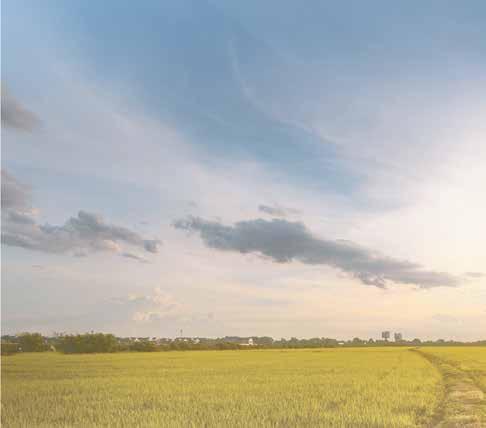



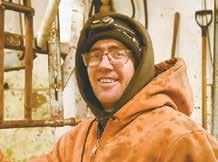
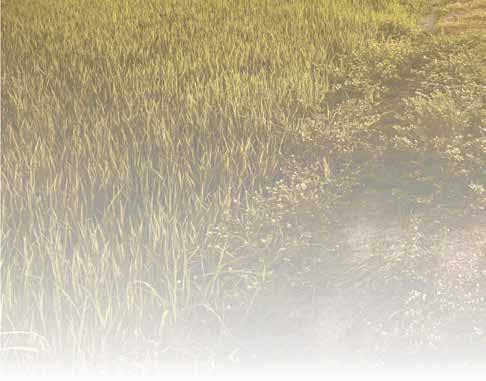
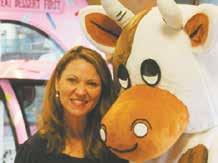


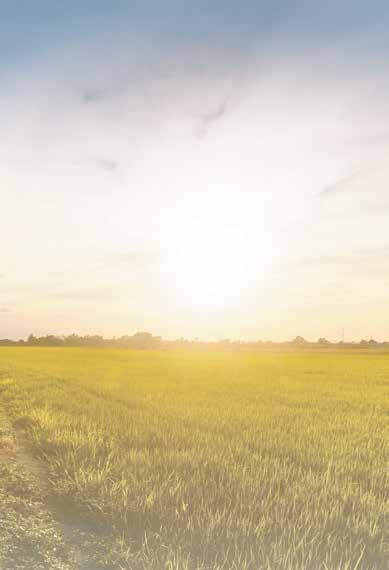

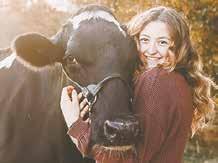
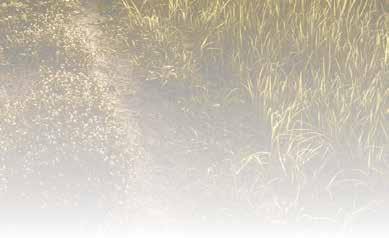
















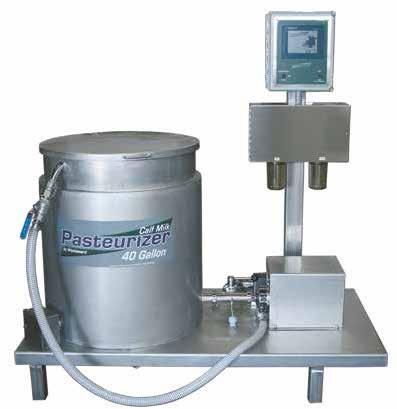
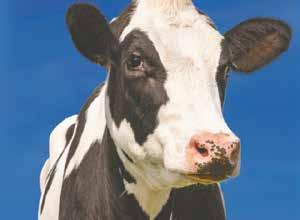


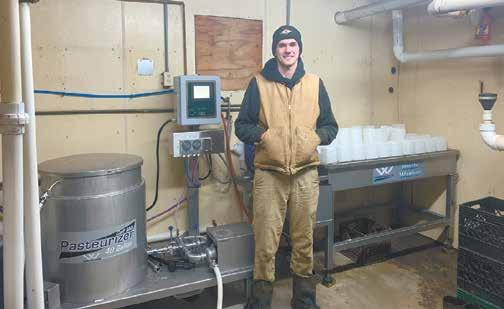


“We began looking at a bottle washer to keep bottles cleaner and eliminate an extra job. After seeing the option to purchase the bottle washer and pasteurizer combination, we started to look at its benefits. Once we calculated what we would save by not buying bags of milk replacers, it was an easy decision to add the pasteurizer. Since installing the new system of the bottle washer and pasteurizer combination the calves drink better and are healthier.”


Following the incident, the bull was shipped two days later. Using a skid loader, Tyler moved the bull into the milking barn and set the gates to load him onto the trailer. Once the gate opened, the bull was not ready to depart.
“When I couldn’t get him out of the barn, I knew exactly who to call,” Tyler said.
Miley was called back into action and loaded the bull onto the trailer and off the farm.
Two years prior, Miley had her own health scare. A working dog, Miley had injured her hip working cattle. Initially, the dog worked through her injury and was back to working cattle how she was accustomed to, until one day she could not move her back legs. The Ronans took her to the vet and were informed Miley needed hip surgery. Now the Ronans realize that what started as a surgery to keep one of their top cattle dogs around, turned into a life-changing decision.
Jim passed all the tests, and three days after being own in, he was on his way back home.
“The people at the hospital were tremendous, but I just knew I couldn’t stay in there any longer than I had to,” Jim said.
Upon his return, Jim needed to use a walker to get around and had a hospital bed brought into the lower level of his home.
Tyler kept the farm going while Jim recovered, with help from his girlfriend, Karly Hemmersbach, and several nephews who helped on the weekend.
“I wouldn’t be here today if it wasn’t for Miley.”
“That stretch was tough during the week because the work for two of us fell completely on me,” Tyler said. “It made for some long days, but we had a lot of family and neighbors asking how they could help. We had great support. That’s just what we do around here. When someone needs help, we’re all willing to lend a hand.”



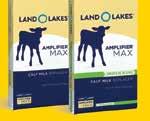


At the hospital in La Crosse, Jim was already trying to get back home.
He was told it would be at least a week before he would be released, and he had an array of physical tests he needed to pass. It started with a breathing capacity test, three unassisted walks around the hospital, and a test with the physical therapist requiring him to get in and out of a car without assistance.
Two and a half months after the attack, Jim was back in the tractor chopping corn.
“I wouldn’t be here today if it wasn’t for Miley,” Jim said. “I wouldn’t have time with my grandkids. It really makes you think about the little things. Maybe slow down, spend more time with family. It denitely makes me appreciate my dog a lot more.”
February 20, 2025 | 9:00AM - 3:30PM
Florian Gardens | 2340 Lorch Ave | Eau Claire, WI






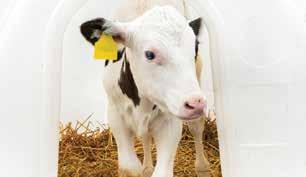


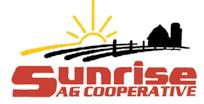


























In the lm, the main character is facing the foreclosure of his farm. He makes a deal with the banker: if the Packers can bring home the Lombardi Trophy, his loan will be extended.



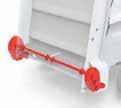
“Movies are high-risk investments; nine out of 10 lose money,” Lindwall said. “We brought the Packers into the story to help expand the viability of the audience.”
The lm pays homage to Wisconsin’s nearly universal love of the Packers. Even the franchise itself has become involved.
“Once the Packers caught the vision, they went all in,” Lindwall said. “It was like an out-of-body experience.”
The Packers, along with their corporate partners, came to appreciate the project for its wholesome nature.
“‘Green and Gold’ portrays the story of Packers fans’ devotion to legacy and community,” said Justin Wolf, director of the Packers corporate sales and activations. “It’s a must-see; we are proud to be part of a story celebrating supporting one another and showcasing the critical role that family farms play across our great state of Wisconsin, and beyond.”
With multiple pieces of the puzzle beginning to fall in place, the Lindwalls
turned their thoughts towards preparing for production. Davin’s wife suggested that actor Craig T. Nelson was a perfect choice for the role of Buck, the main character in the story.
“Our casting directors kind of laughed us out of the room when we said we wanted Craig,” Lindwall said. “At that point, we were just shing for anything we could get. Craig literally called us the next day after he read the script and said he wanted to do this lm with us. He’s been the best, so gracious to us as rst-time lmmakers.”
The story appealed to Nelson on several levels.
“The story felt personal,” Nelson said in a press release. “I felt a real connection to it because the Nelson family farm has been a working farm in South Dakota since the Civil War; and my wife’s family were also farmers.”
Nelson’s character is a quintessential Wisconsin dairy farmer, a man who names his cows after legendary Packers players while facing a bevy of issues that are part of the everyday landscape for many in the state’s ever-changing dairy industry.
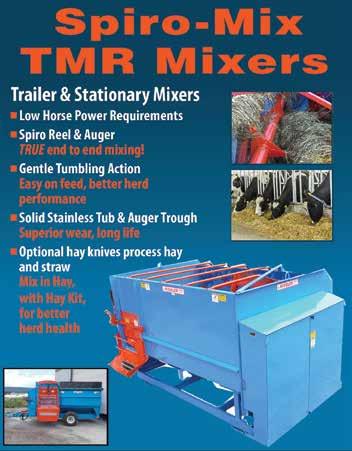

The cast and crew of the independent lm “Green and Gold” work to set up a scene among a herd of beef cows near Sturgeon Bay, Wisconsin. The movie was lmed primarily in Door County, with scenes shot in Appleton and at Lambeau Field in Green Bay.
“There’s some Hollywood fun, like plowing elds with horses and milking cows by hand —Buck’s friends nicknamed him ‘Horse and Buggy,’” Lindwall said. “It’s not a documentary on dairy farming, it’s just about the person Buck is, doing things as old-school as he can. There are a lot of authentic moments dairy farmers can relate to, especially the parts about family.”
The movie, lmed entirely in Wisconsin, touches on many of the complex and difcult social issues facing the dairy farm community in rural America, Lindwall said.
“I think that is a unique component, sharing that vulnerability,” Lindwall said. “A lot of people wouldn’t think the dairy industry, lled with people that are so salt of the earth, would have such an alarming rate of suicide.”
As the Lindwalls moved into the marketing and distribution phase of their project, the Culver’s restaurant franchise signed on to support the project.
“There aren’t a lot of brands that are more general population brands that have the farming attachment that Culver’s does with their Thank You Farmers Project,” Lindwall said. “We were thrilled when they signed on after telling us they loved the lm — that it
represented everything they believe in.”
Culver’s dedication to rural communities, supporting agricultural education by donating millions of dollars, impressed the Lindwalls so much that at the end of the movie, there is a QR code to make a donation to support the Thank You Farmers Project.
As the brothers prepared to release “Green and Gold,” their original goals were small: hoping the lm would appear in maybe 100 theaters throughout Wisconsin.
“Our distributor sent out a screener link, nationwide, nearly 1,000 theaters across the country signed up to take it and 100 theaters in Canada expressed interest,” Lindwall said. “My jaw dropped; I nearly fell out of my chair when they sent me the list.”
The experience of living out their dream and making a lm that hits close to home, has been one Lindwall said he and his brother will cherish forever.
“The farmers we grew up around and knew, they were an important part of our lives, and we wanted to share that story,” Lindwall said. “We’re so proud of this lm, even if it’s the only one we ever get to do — it has been bigger and has already had so much more impact than we ever could have imagined.”







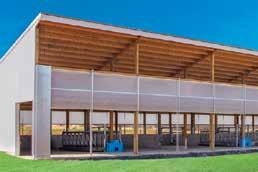


By Dan Wacker dan.w@dairystar.com
RIVER FALLS, Wis.
The University of Wisconsin–River Falls recommitted itself to dairy food production education with the addition of the Wuethrich Family/Grassland Dairy Center of Excellence. A project 11 years in the making, the dairy pilot plant opened its doors in October 2023, revitalizing the efforts of UWRF to be a leader in the food science world.
Rueben Nilsson, the dairy pilot plant manager, and Mike Orth, the dean of the College of Agriculture, recognize how special it is to have this type of plant available for students interested in food science.
“It’s critical to have this on campus,” Orth said. “I think a differentiator between us and other schools is that we’re really student driven. The faculty do a lot of the teaching, and we want the students to get in there and get their hands dirty.”
With over 90% of the state’s milk going towards cheese production, the University saw the need to train students with hands-on experience to better prepare them for the workforce.
Nilsson works with UWRF faculty and others in the dairy industry to help train the workforce on the school’s new equipment.
“There’s only UW-Madison and us who can provide this kind of learning experience,” Nilsson said. “I get to work with some of our professors and help them craft what they want to do in the pilot plant.”
The plant helps provide a hands-on learning experience partnered with traditional classroom education. The experience that is offered students of working directly with food production can help illuminate career opportunities that were previously unknown.
“The plant helps provide more awareness of our food science degree,” Orth said. “Very few students come in

interested in these areas until they learn about it here. With a food science degree, and the work experience we can offer, there are plenty of job opportunities after graduation.”
UWRF had a dairy plant on campus starting in the 1980s, but with outdated equipment, the plant shut its
doors in 2018. Former director of dairy production, Michelle Farner, led the charge for funding the new facility. What started as a smallscale project gained traction from businesses within the dairy industry and led to a 6,000-square-foot, $9 million facility. Donations in-


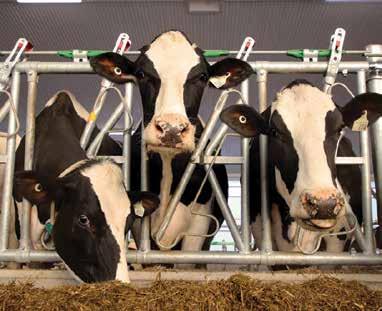

cluded over $5 million from businesses, $1 million from the Wuethrich family and the state funding the balance.
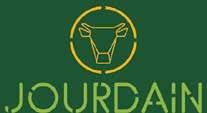




The plant works in conjunction with Mann Valley Farm to bring in milk for use at the dairy plant. Along with the campus farm, the plant provides opportunities for departments across campus to learn in a real-world scenario.
“There’s the marketing side of it,” Orth said. “We could go to computer science and use some traceability software and reporting. There could be a student project that could use some of that data; the art department could create artwork for labels. It’s a really strong opportunity to work with other departments on campus.”
Orth said that kind of synergy is something UWRF can benet from.
“It’s critical that we work with other departments within our university,” Orth said. “The better you can integrate students and faculty from other colleges, the more benets you can see.”
The on-campus dairy plant provides Nilsson and his staff with a chance to learn new techniques and take chances to create something new. They can also partner with other departments on campus to potentially ll a need.
“We’ve talked with the athletic department about what kind of product we could produce that they nd benecial,” Nilsson said. “Could we produce something high in protein for a post-workout beverage or product? We’re continuing to nd these opportunities as we go and expanding what we can create.”
Most recently, Nilsson began developing a nacho cheese to use on campus in concession stands during events.
The dairy plant’s nacho cheese was projected to be unveiled at the UWRF Science Olympiad Border Battle Jan. 25. Other products Nilsson cooked up include a variety of avored cheese curds, including chipotle, gochujang and chili lime. The opportunity to create new products and be creative is what intrigued Nilsson.
“That was one of the big attractions to the job, the freedom to play with whatever I wanted to try making and providing experiential learning for our students,” Nilsson said.
Being a newer plant, not all cheese types have yet to be duplicated. A challenge the plant faces is storage space to provide more opportunities to expand its line of products.
“We’re limited on space as far as aged cheese,” Nilsson said. “But the avored younger cheeses are where we can really start to work.”
Nilsson’s background in cheese production helped the plant start production as soon as possible with the rst batch of cheddar produced in March 2024. Nilsson and his team will focus on ice cream production soon.
“I’m excited to start working with the ice creams,” Nilsson said. “We need to nail down our base rst, get that vanilla right, and then we can continue to add in more toppings.”






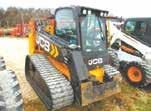



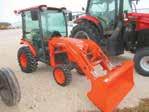





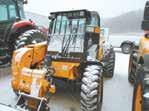





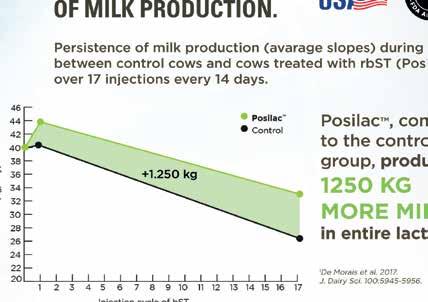





House Agriculture Committee Chairman Glenn ‘”GT” Thompson did not give a timeline for the farm bill but said it would happen sooner rather than later. “The longer we wait into the fall, the more likely we’re going to have to come back next December and ask for more economic disaster relief,” Thompson said. “Producers don’t want that and we don’t want to do that; we won’t have to do that if we get this farm bill that has such a strong safety net component in it passed sooner rather than later.”
Understanding needed for all farm bill titles
House Agriculture Committee
Pasteurization inactivates bird u virus
After evaluating H5N1 infections in dairy cattle, University of Wisconsin Center for Dairy Research Director John Lucey is convinced pasteurization inactivates the virus in milk. “It seems like this bird u virus, this inuenza virus, is pretty easy to inactivate by heat treatment,” Lucey said. “I’m pretty hopeful that all of these raw or heat-treated cheeses would be inactivated by the treatment when we’re using it.”


Ranking Member Angie Craig was part of a farm bill forum at the Farm Bureau convention with committee chair GT Thompson. Craig said it is important for her entire committee caucus to understand every title of the farm bill. “That’s our job on the committee, but that is also a role that each of you can play particularly with the Democratic members of Congress.” Most of the Democratic members on the House Agriculture Committee represent major metro areas and have focused on the nutrition title. However, Craig said she has new members who have a background in agriculture and farm policy. In front of the Farm Bureau audience, Craig said she is not afraid to stand up to members of her own party on important ag issues. “I have a history of calling the balls and strikes on whatever administration I’m in Congress under,” Craig said. “It pisses off Democrats when I complain about the Democratic administration and annoys some of my Republican colleagues when I complain that certain policies aren’t good for the country.”
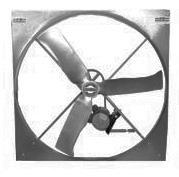


• The highest air ow in a circulation fan - 33,900 CFM.
• Cast aluminum blades have a lifetime warranty.
• Totally enclosed maintenance free, high ef ciency motors have a full two year warranty. Model VP


By Don Wick Columnist Ag Insider

innovation
The latest issue of Food Business News highlighted new dairy ingredient innovations. Fit Butters LLC of Minneapolis was cited. The company produces nut butters formulated with whey protein isolate to create avors like Boston Cream Pie Cashew. A New York company, David, is selling the David Protein Bar. The high protein bar is made from milk protein isolate, collagen, whey protein concentrate and egg white. Dry dairy ingredients, like casein and whey, have a neutral color and avor prole, which is favored over plant proteins.
Dairy Business Association highlights legislative priorities
The Dairy Business Association has unveiled its legislative priorities for the year ahead. The list includes protection for Wisconsin’s dairy industry from disruptions that would hurt its growth and sustainability, regulatory fairness and support for clean water initiatives and lasting ag transportation infrastructure.
Final Milk Marketing Order rule is out
The U.S. Department of Agriculture has issued its nal rule on Federal Milk Marketing Orders. Most of the changes take effect June 1. National Milk Producers Federation President and CEO Gregg Doud said, “ this change will provide a rmer footing and fairer milk pricing.” For this region, there is an update for the make allowances for Class III milk. American Farm Bureau Federation President Zippy Duvall said these reforms will not be uniform for dairy farmers across the country. Duvall is calling for a mandatory audited survey of the milk processing costs used to help establish make allowances.
Consumer demand highlighted at International Dairy Foods Association meeting
Speaking at the International Dairy Foods Association Dairy Forum, IDFA President and CEO Michael Dykes discussed everything from tariffs to ag labor, articial intelligence to sustainability. Consumer demand was also touted. “Per capita consumption’s increasing butter is at levels we haven’t seen since the 1950s,” Dykes said. “They (consumers) also voted with their wallets. (We) saw doubledigit growth in categories like cheese, probiotic yogurts and specialized nutrition products. Ninety percent of consumers have no plans to reduce their dairy product purchasing behavior.”
Cattle supply shrinks again
The U.S cattle supply is at its lowest point in 64 years. According to USDA’s annual cattle inventory report, the total number of cattle and calves is 86.7 million head. That’s down 0.6% from a year ago. Beef cow numbers are down a half-percentage point from the same time in 2024. Beef heifer replacements declined 1%. The dairy cow inventory is nearly unchanged from a year ago, while the number of dairy replacements dropped nearly 1%.
Slaughter cow prices remain strong
The price of cutter cows has risen for eight consecutive weeks. According to a report from Urner Barry, the price of these slaughter cows is $238 per hundredweight. That’s up from $185 at the beginning of the year. Year-over-year, these prices are up nearly 29%.
At its annual meeting in Charlotte, North Carolina, members of the National Mastitis Council approved a name change. The group is now known as NMC: The Global Milk Quality Organization. National Dairy Quality Awards were presented to six dairy operations including two Wisconsin farms: Cottonwood Dairy of South Wayne and Country Aire Farms of Greenleaf.
Wisconsin family named Innovative Dairy Farmer of the Year
At the International Dairy Foods Association Dairy Forum, Grotegut Dairy was named the 2025 Innovative Dairy Farmer of Year. The Newton, Wisconsin, dairy farm is owned by Doug Grotegut and features a 3,500 head cow herd. IDFA cited Grotegut Dairy for its “commitment to technological innovation, building a sustainable future and giving back to their local community.”
Vilsack returns to Iowa
Former Agriculture Secretary Tom Vilsack will take over as the chief executive ofcer of the World Food Prize Foundation. Vilsack succeeds another former Iowa governor, Terry Branstad, in the role. Vilsack’s ofcial start date is March 1.
Hall of Fame honors for Traynor
Bob Traynor has been inducted into the Wisconsin Association of Fairs Hall of Fame. Traynor chairs the Pierce County Fair Committee and serves as the junior dairy superintendent.
Trivia challenge
Dairy cows can produce up to 125 pounds of saliva per day. That answers our last trivia question. For this week’s trivia, how many essential vitamins and nutrients are found in milk? We’ll have the answer in our next edition of the Dairy Star. Don Wick is owner/broadcaster for the Red River Farm Network of Grand Forks, North Dakota. Wick has been recognized as the National Farm Broadcaster of the Year and served as president of the National Association of Farm Broadcasting. Don and his wife, Kolleen, have two sons, Tony and Sam, and ve grandchildren, Aiden, Piper, Adrienne, Aurora and Sterling.

In addition to production and SCC, we use the milk pregnancy test, MUN, Johne’s and Leukosis.
Which is your favorite and why? The production and SCC.
How do you use them within your dairy? We use the production and SCC reports for culling decisions and use the fat, protein, and MUN reports to evaluate feed ration changes.
How long have you been using the DHIA pregnancy test? We have been using the milk pregnancy test for about two years.
What do you like about the DHIA Pregnancy Tests? It’s nice to be able to do the pregnancy test without any extra time or labor.
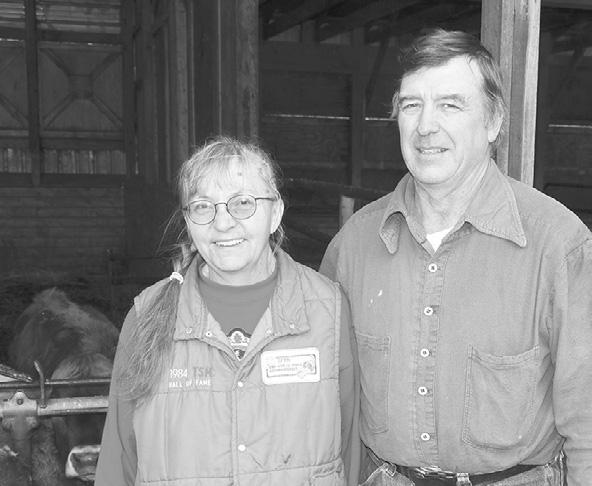
How does testing with DHIA bene t your dairy operation? We use the information to improve production and ensure milk quality. The negative herd tests for Johne’s and Leukosis help with marketing show and breeding stock. The milk pregnancy test provides timely information for reproductive management between vet herd health checks.
Tell us about your farm. I farm with my wife, Barb, and two youngest sons Benjamin and Daniel. We milk 85 cows. The boys plan to take over the farm in the near future. We raise farm 560 acres and corn, oats, alfalfa and grass.
URUS Dairy Consulting Experience gives students real-world skills
By Stacey Smart stacey.s@dairystar.com
MADISON, Wis. — Nineteen college students from across the U.S. and Canada came together for a week-long, hands-on learning opportunity with one common goal — to help dairy farmers succeed. Shaping the next generation of dairy professionals is the backbone of the URUS Dairy Consulting Experience which took place Jan. 6-10 in Madison.
The program provides students with an opportunity to gain a compet-
itive edge in herd consulting as they work with experts on dairy record analysis, reproduction, genetics, calf care and conditions impacting herd performance. Students networked with industry leaders from URUS companies, including Alta Genetics Inc., GENEX Cooperative, VAS, PEAK, Trans Ova Genetics and SCCL.
Through a mix of classroom and on-farm learning, students collaborated as teams to evaluate and analyze dairies and learn how to understand and apply theories to real- world challenges. This year’s program included visits to Statz Bros. Farm near Marshall and Maier Farms near Waunakee.
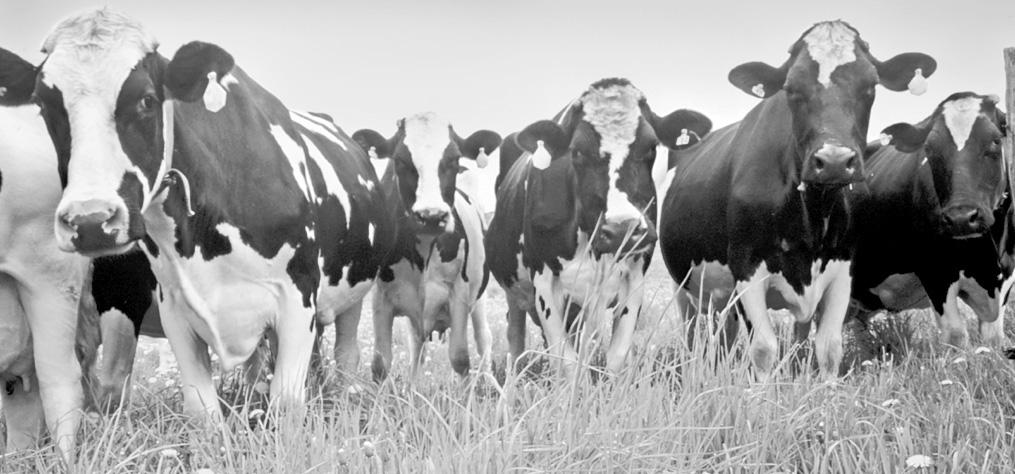

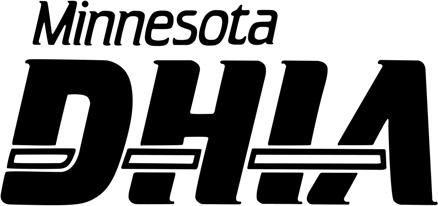

USED TRACTORS
www.mndhia.org


CIH 8910, 1955 hrs., 2WD, like new$105,000
CIH 7120, 2WD, 5800 hrs. ................$55,000
CIH 7110, 2WD, 4500 hrs..................$63,000
CIH 5250 2WD, 4,700 hrs. .............. $54,000
CIH MX120, 2WD, 3,800 hrs. ............$72,000
CIH MX120 w/loader ........................$75,000
IH 1456, cab ..................................... $22,000
IH 1466, 6800 one-owner hrs ............$21,000
IH 686 . ..............................................$14,000
‘98 JD 7610, 19 spd., PS, 5,500 hrs., 25 MPH, very sharp ....................... $75,000 McCormick MC120 FWA, 2,600 hrs ..$57,000
TILLAGE
CIH Tigermate II, 26’$28,000
CIH Tigermate II 26’ w/rolling basket $32,000
CIH Tigermate 200 w/basket, 34’ ..... $42,500
CIH Tigermate 200, 28’ w/rolling basket ...............................$40,000
CIH Tigermate 200 28’ w/basket ...... $37,000
Tigermate 200 28’ w/rolling basket ....$31,000
DMI Tigermate II, 26.5’, 3-bar mulcher ..................................$14,000
CIH RMX 340, 28’ w/mulcher ...........


“The URUS Dairy Consulting Experience is a worldclass program for the most elite undergraduate dairy students,” said Eva Doornink, marketing and communications coordinator at PEAK.
“Through DCE, students learn what it means to be a successful consultant on the world’s most progressive dairies.”
Throughout the week, students participated in case studies and presented their ndings to URUS’ panels of experts. Analyzing each farm’s DairyComp data was a big piece of the program, Doornink said. The students searched for opportunities for improvement and gave nal presentations at the end of the week.
Students competed for a chance to win a $1,000 scholarship, which was awarded to Carmen White of Alberta, Canada. White is a senior at the University of Guelph in Ontario, where she is studying food and ag resource economics.
“The DCE program is a fun-lled experience for anyone who wants to learn more about being helpful to farmers in the areas of genetics, reproduction and full-on data analysis,” White said. “The sessions were amazing, and this is a really good way to get hands-on experience.”
Joselyn Hurlburt, talent acquisition coordinator at
February 8, 2025
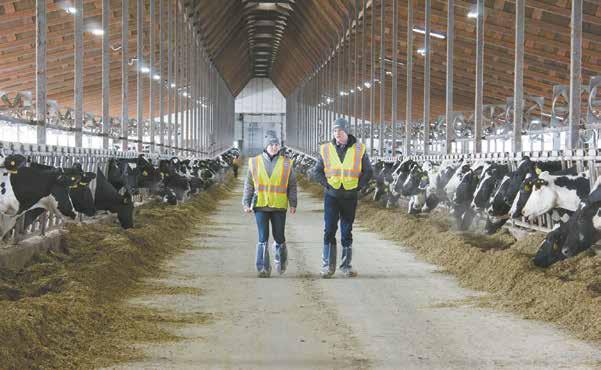
Students par cipa ng in the URUS Dairy Consul ng Experience share ideas Jan. 7 during a farm walk-through at Statz Bros. Farm near Marshall, Wisconsin. During DCE, students collaborated as teams to evaluate and analyze dairies as they learned to apply theories to real-world challenges.
URUS, said the most important thing they look for in a candidate is a passion for the industry.
“We want someone who has that drive for wanting to learn,” Hurlburt said. “We’re looking for that person who is super excited to soak up the opportunities and knowledge presented to them here.”
Helping to educate and give back to upcoming youth in the industry is the reason the program was started,
Hurlburt said.
“We’re big on training and development at URUS,” she said. “We want to give students the tools they need to grow in their career. DCE provides a networking opportunity and chance to see our different companies and organizations along with possible career paths. It’s a totally different outlook compared to a school setting.”
Applicants selected for
the program received a oneweek, all-expenses paid trip to Madison. Most students come from dairy farms or have an agricultural background. All have agricultural majors, such as animal science or dairy science.
“We’re always trying to expand the program,” Doornink said. “This year, we had ve students from Canada, which emphasizes the global aspect of DCE, which is in its
fth year.”
Anna Poull, a senior at South Dakota State University studying communication and media studies served as the marketing and communications intern for this year’s DCE.
“I don’t think there’s another opportunity anywhere else to connect with this many employers and network with this many companies,” Poull said. “It’s such a supportive learning environment.”
Grady Taylor, a senior from Temecula, California, studying dairy science at California Polytechnic State University, said he has always wanted to be a consultant.
“I enjoy consulting and really wanted to get out here and see Wisconsin and learn what it is to be a consultant,” Taylor said. “The DCE program is a great place to network and a great place to learn. I like to be hands-on, and that is what I got every day here.”
The classroom portion also included sessions on consultative selling and relationship building.
“I learned so much about people’s personalities and how we can all interact,” Taylor said. “I think that’s a great takeaway for conducting business on a dairy farm.” Turn to URUS | Page 13






























































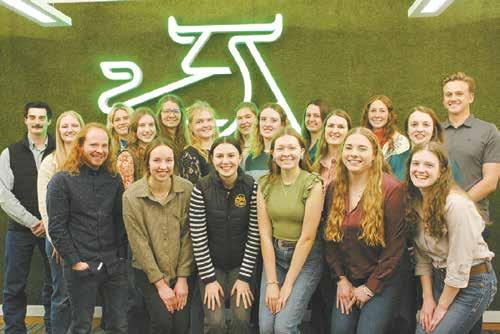
The college students selected to par�cipate in the 2025 URUS Dairy Consul�ng Experience gather Jan. 6 at the URUS office in Madison, Wisconsin. The students came from across the U.S. and Canada for a week-long, hands-on learning opportunity.
Emory Bewley, a senior at The Pennsylvania State University studying animal science with a dairy science focus, comes from a dairy farm in northeast Pennsylvania where her family milks 50 cows.
In addition to expanding her horizons on the reproduction side of a dairy, Bewley said meeting other likeminded college students motivated her to apply to the DCE program.
“DCE truly is a networking opportunity and a chance to learn more about the dairy industry while working with the URUS community,” Bewley said. “We learn from those professionals in the industry who have experience and can offer advice to help us in our future endeavors. We are also able to rene those classroom skills we learned in a more practical, real-world setting.”
Bewley said her family’s farm is mainly focused on high-type show cows, and DCE has shown her the more commercial side of the industry.
Kylie Konyn from San Diego, California, is a senior at the University of Wisconsin-Madison studying dairy science with certicates in ag business and science communications. Her family’s 900-cow dairy is the last remaining dairy farm in San Diego County.

After graduation, Konyn plans to pursue a master’s degree in nutritional physiology with special emphasis in transition cow health and metabolism at Cornell University. Following that, she hopes to return to the dairy industry as a nutritionist in management consulting.
“Regardless if you’re in repro, genetics, or nutrition consulting, it’s all about creating a uniform team on the farm and creating that whole, rounded relationship,” Konyn said. “Even if I as a nutritionist may not have a direct input into what bulls they are using, I learned the effects I can have on-farm and gained an understanding of where other consultants on the farm may be coming from.”
Konyn said she enjoyed learning about different technologies and innovations within the industry and what is coming in the future.
As the students prepare for the next phase in their agricultural journey, they went home with a depth of knowledge to benet the future of the dairy industry.
“DCE is a great way to step out of your comfort zone and test your abilities in a bunch of different areas,” White said. “I’m excited to take the things I learned this week and apply them not only on my farm, but in the rest of my career and personal life.”
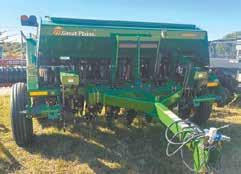






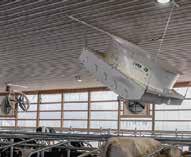














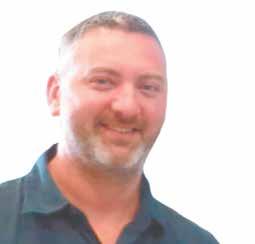
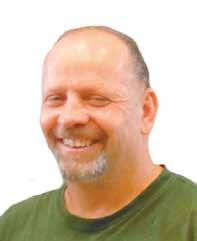
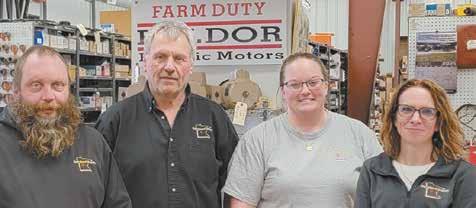


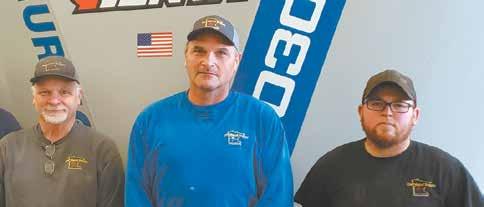
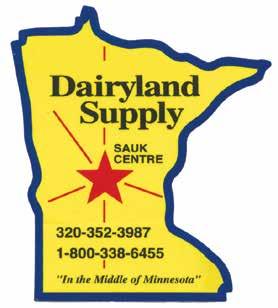



John Rosenhammer
Sleepy Eye, Minnesota
Brown County 200 cows
What method do you use to recruit quality employees?
The vast majority of our employees are high school kids. A few come back during college breaks and over the summer. I rarely have to look for employees; most of them are friends of present workers who are interested in working for us. Sometimes, I visit with employees during school or community events. The hours we require are from 4-6:30 in the afternoon. This time frame seems to t very well with the high school aged students.

How many employees do you have and what are their duties? We have a pool of about 10 employees available throughout the year, depending on school activities. We expect them to show up at 4:00 p.m. and be nished and heading home by 6:30 p.m. Their duties are to milk cows, move cows, scrape pens, bed stalls and clean up the milking parlor after.
When you hire an employee, what is your onboarding process? I work with the employees and go through the basics of what I expect. I prefer to milk beside them and to work with them as different situations arise and show them how to problem solve.
How do you remain competitive in retaining employees? I think the key to keeping employees happy is working with and beside them. I never expect them to do anything that I wouldn’t want to do myself. I never refer to milking as ‘work’ but rather, try to create an atmosphere of fun. Often, I ask what is going on in their lives and try to encourage them, thus building relationships. Also, I am very understanding when unexpected things come up in their lives, because I also had ve kids of my own.
How do you keep your staff motivated? Our help is paid per milking, rather than by the hour. I always preach efciency. I am amazed how their speed improves after they gain condence and experience. I always try to complement them for their work and thank them for coming.
What is a benet your employees receive? We provide bottled water, cookies and ice cream treats. Occasionally, they are lucky enough to have Patty’s Special K Bars. In the past, we have taken hay rides to graduation parties and participated in various parades. We’ve also had “end of summer” bonres in the evenings. A time or two during Christmas break, we have hosted an afternoon of card games at our house.
Tell us about your farm and family. Our dairy is a family-run partnership started by my parents and is now managed by my brother, Greg, and me. We milk two hundred cows in a double-12 parallel parlor. Family help has always been the driving force behind our dairy. Greg is in charge of the crops
Bryce Peters (pictured with his wife, Katie and children Macey and Archie)
Chaseburg, Wisconsin Vernon County 300 cows
What method do you use to recruit quality employees? I heavily rely on my current employees' thoughts and considerations when it comes to bringing on a new employee. They are the ones doing the work and typically have a good feel for who will work out well here.
How many employees do you have, and what are their duties? We have four full-time employees and eight part-time employees who do milking, scraping, eldwork and maintenance.
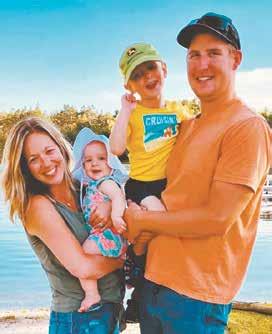
When you hire an employee, what is the onboarding process? Onboarding depends on the position. There is some paperwork, educational videos and a lot of hands-on training.
How do you remain competitive in retaining employees? We give them something they can't get at another job: exibility in hours; opportunity to put in a lot of hours; fun, enjoyable work; and being part of a good team.
How do keep your staff motivated? We share with them the success of the farm and treat them as a valued team member.
What is a benet your employees receive? Education, especially for younger employees. There is no better place to learn basic mechanical skills, teamwork, the importance of hard work and animal stewardship than on a farm.
Tell us about your farm and family. Peters Farms has been shipping organic milk since 1988. We also raise organic hogs and laying hens. The current owners of the farm include my uncle, Roger Peters, and cousin, Russell Peters.
and mixes feed. Laura lls in if necessary and is responsible for vaccinations and repro checks. Mary milks most week-day mornings and helps with odds and ends to keep the farm looking neat. Becca tries to help with morning milking one day a week. Joe operates a custom-farming business and lls in when needed. Johnny has a year left in the military and is anxious to get home and join in somewhere. During harvest, we are fortunate to have uncles and cousins help with harvest, tillage and maintenance. Dairy farming is the best way to raise a family.



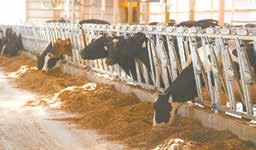
Kyle Abel (pictured with his wife, Brittany, and son, Derry)
Loyal, Wisconsin Clark County 400 cows
What method do you use to recruit quality employees? My best luck has been with current employees recruiting. Employees like to bring in people they know. I do use different online sources; I like to post on my personal and farm Facebook pages when we have openings, especially part time, and I like to post on Indeed and Craigslist for full-time positions. I nd different positions need to be advertised differently for best results.
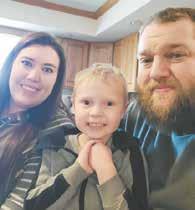
How many employees do you have, and what are their duties? We have about 20 employees at any given time. Because of our short shifts (3-4 hours), it is a good place for people wanting part-time or supplemental income. Only about a third of our staff at any given time are averaging more than 40 hours a week. I would break it down as one nancial manager, two overall general managers, one feed/crop/maintenance lead, one robotic lead, two parlor and youngstock leads, and the rest are milkers and general laborers.
When you hire an employee, what is the onboarding process? There is usually about a one-hour walk-around interview to explain duties and facilities. There is an extensive packet including tax and employee info, safety protocols, animal welfare agreements, employee conduct agreements, and more that they need to read, review, sign, and return. Lastly, there is a training shift, where they will work side by side with a manager until we feel they have grasped the task at hand. Then we monitor them to see if further retraining is required in the future. We try to always be teaching and expanding roles, it is the quickest way to increase an employee's compensation.
Katie Grinstead
Vir-Clar Farms LLC
Fond du Lac, Wisconsin
Fond du Lac County
3,300 cows on two sites
What method do you use to recruit quality employees? We rst try to recruit from within. I feel this is a great way to keep our employees engaged and growing. For example, if we need a new calf team member, we offer it to current employees rst. If we are looking for an entry-level position, we have an incentive bonus for our employees as well as the new employee we hire. We give a bonus to both employees at 30 days and 90 days. We feel that if we create the right environment for our employees, they will want their family and friends to work at the dairy.

How many employees do you have, and what are their duties? Between our two dairies, we have 57 full-time employees, and we hire seasonal employees to help with crops. We do everything we can at the dairy except that our heifers are custom raised in Nebraska from 5 ½ months until 60 days before calving. Because of our size, our employees have their areas of focus, such as milkers, calf team, maternity area, hospital team, shop and cropping crew. This allows for consistency in the job getting done by the same people every day.
When you hire an employee, what is the onboarding process? Typically, new hires start out as a milker. We have managers who started at the farm milking. I think when employees see there is opportunity for growth, this keeps them motivated to keep learning and do a good job. When a new employee starts, they are given a tour and our herdsman, Joaquin, spends time talking about the dairy and getting to know the new employee. They are given a mentor in the parlor who works side by side with them for at least three days. We want the new employee to understand the milking protocol and feel comfortable. We also have learned over the years that some people are happy in the parlor and that’s where they want to stay. We have an employee who has been milking cows for 27 years.
How do you remain competitive in retaining employees? I try to pay competitively in comparison to the farms in our area. I will never compete with the big corporations like Land O’Lakes and Grassland, but when I post a new opening, I check the farm ads in our area and try to be on the top end of what I nd. I expect a lot from our staff and try to pay accordingly. Over time, I try to use technology and protocol efciencies to increase the amount of milk shipped per employee hour so I can pay competitively.
How do you keep your staff motivated? My dad is the driver behind motivating our staff on a regular basis. He breaks down weeks and days into projects that people can rally around: “Be prepared for next week, there’s 18 due to calve” or “We’re going to need everybody’s best next week because we’re going to haul manure.” By giving everyone time to prepare, we can ensure their best.
What is a benet your employees receive? We try to offer exible scheduling for our staff. I think a person should be able to go to the doctor, dentist, court, kid’s spelling bee, eld trip, etc., without fearing losing their job. We also offer quarterly bonuses based on attendance and punctuality. We pay $1 per hour worked in said quarter if an employee has managed to be punctual and not miss any shifts unscheduled. Mistakes happen and we work with people but things like a “no call, no show” are unacceptable, except in cases of emergencies.
Tell us about your farm and family. My wife, Brittany, and I bought our family farm from my father in 2023. We have a four-year-old son, Derry. My father, Perry, is still very involved in the day-to-day management. He and my son are best friends. My sister-in-law, Cassandra, is our robotics lead and her kids, Todd and Tawnee, help out on the farm as much as they can. We currently milk about 200 cows robotically with four DeLaval VMS robotic milkers installed in 2016 and milk 200 cows in a double-6 Universal step-up parlor built in 1996. We raise all of our own replacements and sell roughly 50-60 dairy replacements every year as springers or lactating cows. We crop just shy of 800 acres and are currently working on doing more eldwork ourselves and hiring less done. Our primary forage is corn silage and we purchase a large amount of our concentrated feeds (dry corn and protein).
How do you remain competitive in retaining employees? It is something we work on every day. We consider our employees to be our work family. I think it is important to be competitive in pay, and I also feel it is important that employees feel like they are part of a team. We also try to celebrate the great things (reaching a certain somatic cell count or milk production goals, harvest nally being done). I really think it’s important to listen to your employees and the ideas they have. In our reviews, someone suggested English classes at the farm. We found a great person who came to the dairy and taught English to employees who signed up for the class. It was very successful, and we are currently planning the next class.
How do you keep your staff motivated? By doing a lot of the things listed above. Hiring the right people and getting them in the right seat on your bus is key. We work hard to keep the farm tour-ready at all times. I think people enjoy working in a nice, clean environment. We celebrate birthdays, and I post them on our Facebook page. I know a lot of our employees follow our page and are proud that we acknowledge them.
What is a benet your employees receive? We have an SCC bonus as well as a bonus for a dead-on-arrival rate of less than 4%. I will make lunch when we celebrate someone or when we have meetings. We feed the cropping crew when they are working late. We pay vacation based on years of service. We also celebrate 10 and 20 years of service with a special bonus.
Tell us about your farm and family. Vir-Clar Farms is a fourth-generation dairy farm. We are currently milking 2,400 cows in Fond du Lac, Wisconsin, and 900 cows in Ridott, Illinois. All the cows calve in Wisconsin, and the Illinois site is just for milking. We farm 3,500 acres in Wisconsin and have approximately 350 acres in Illinois. The farm in Fond du Lac is owned by my parents, Gary and Rose Boyke; me and my husband, Grant Grinstead; and my brother, JR Boyke, and his wife, Samantha. Vir-Clar Farms in Fond du Lac has a double-30 parallel parlor where we milk three times a day and ship our milk to Grande Cheese, which produces Italian cheese. At Vir-Clar Meadows in Illinois, we milk three times a day in a double-12 parallel parlor and ship milk to Supremo, which produces Mexican cheese.



















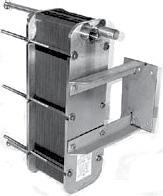




How many times a day do you milk, and what is your current herd average, butterfat and protein? We milk three times a day. Our current rolling herd average is 34,518 pounds of milk, with tests of 4.6% butterfat and 3.3% protein. We peaked last June at 35,420 pounds of milk, with 4.6% butterfat and 3.3% protein, and an energy-corrected rolling herd average of 41,611 pounds of milk.
Describe your housing and milking facility. Our primary barn is a 6-row, sand-bedded free stall with tunnel ventilation. The fresh cow barn is a single-row, 20-stall barn that’s also has sand-bedded free stalls. Both barns have longday lighting. Cows are milked in a double-12 parallel parlor.
Who is part of your farm team, and what are their roles? Tim oversees employees and helps his wife, Sandy, with bookwork and does the clearing of the heifer shed and waste management. He also works with the veterinarian for the herd. Mark does the record keeping of cattle vet work and mixes feed while managing the repro vet work and records. Sandy is the farm bookkeeper and handles calf care. Andrew, Tim and Sandy’s
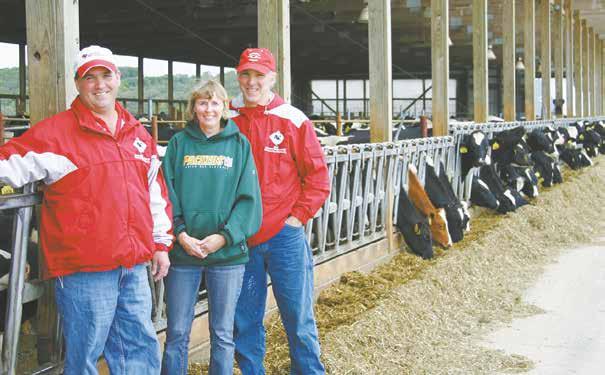
Mark (from
Wisconsin. The Kellers currently milk 293 cows with a rolling herd average of 34,518 pounds of milk, with tests of 4.6% bu erfat and 3.3% protein.
son, also works as part of our crew. He helps with the day-today chores, feeding calves and other daily duties.
What is your herd health program? We use weekly pregnancy checks and utilize a double ovsync program for breeding. Fresh cows are vaccinated every 28 days with


Bova Shield and J-5. At dry off, cows get J-5 and SRP Salmonella vaccine. Calves and heifers get Bova Shield and Ultra Back-7 twice.
What does your dry cow and transition program consist of? Dry cows are housed in our old dairy barn set up with tunnel ventilation and sand-

bedded free stalls. Far-off dry cows are fed a dry cow diet with low-potassium grass hay, corn silage, hay silage, winter rye and a mineral mix. The prefresh group gets a milk cow ration along with some Reashure and X-Zelit for two weeks before calving. We have about a 50-day dry period. Cows calve in a large pack pen next to the

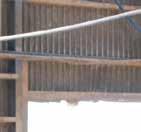
pre-fresh group. Heifers calve in a pack next to the pre-fresh group. After calving, both heifers and cows are moved to our post-fresh cow barn for 3-4 weeks. Post-fresh cows get fed the milk cow ration along with some Nutra Cal and Reashure and a top dress of some nice grass hay.
What is the composition of your ration, and how has that changed in recent years? The main cow diet is a total mixed ration of corn silage, hay silage, winter rye silage, cotton seed, dry distillers grain, high moisture corn and dry corn, both ground fairly ne, 5 pounds of alfalfa hay and some liquid molasses along with a protein mix with all the goodies in to balance the ration. Over the past several years, it seems we are going to more of a corn silage-based diet and less alfalfa hay silage. The ration is balanced by our nutritionist, Bob Hagenow, with Vita-Plus.
Tell us about the forages you plant and detail your harvest strategies. Alfalfa has been harvested for extra seed for about 13 years and we try to run a 5-cut system on 28 day
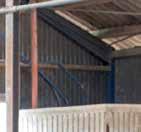



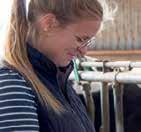

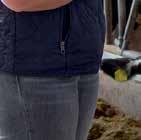


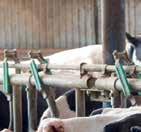

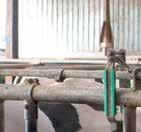





























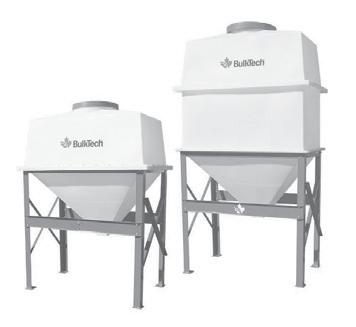



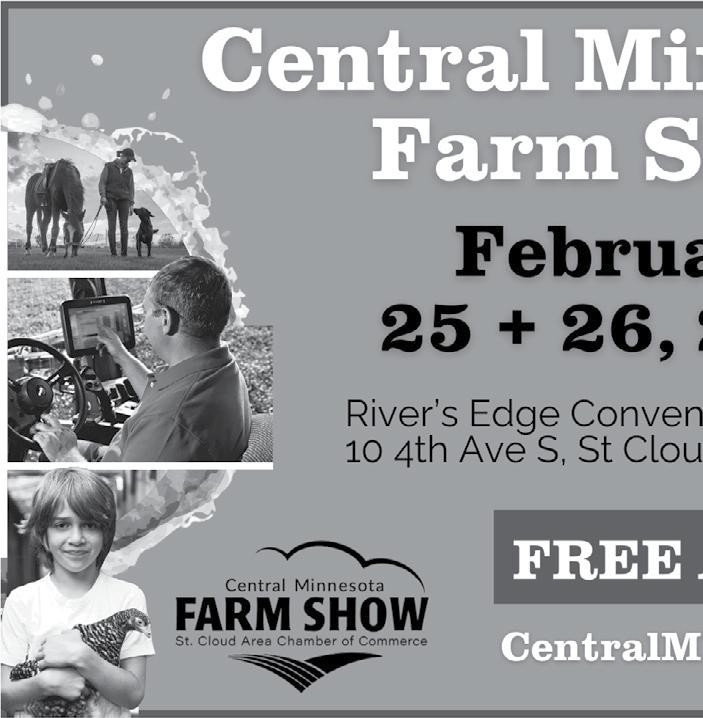




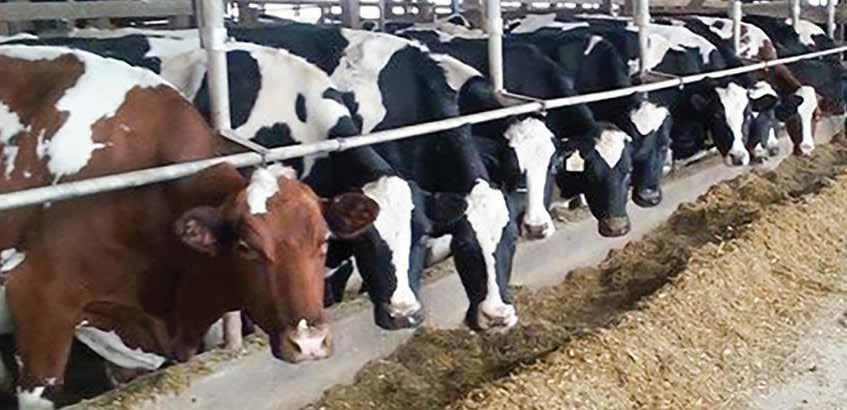


“We’ve used Udder Comfort™ over 10 years: Blue spray on fresh animals and lotion with massage for any flareups. We tried others but always came back to this product because it works,” says Staci Sexton. In 2013, she started Schoene Kuh Dairy, today milking 60 registered Holsteins and Jerseys with a genetic focus on production, health traits, and components. Along with the Irish Ridge herd of her parents and brother, where she helps with herd work, 125 cows are milked at the Millville, Minnesota dairy farm that has been in the family over 160 years.
Schoene Kuh is German for ‘beautiful cow.’ Staci loves working with cows and genetics, earning progressive breeder and milk quality awards. Her 9th AI bull in 10 years is a homozygous polled, high cheese merit bull named King Kong.
“It’s exciting to breed, flush, and wait nine months hoping to get something great,” she says, and when it comes to first calvers “we use Udder Comfort to reduce swelling. Fresh heifers are comfortable with better, faster milkout. It’s easy to use and helps keep our SCC low.”
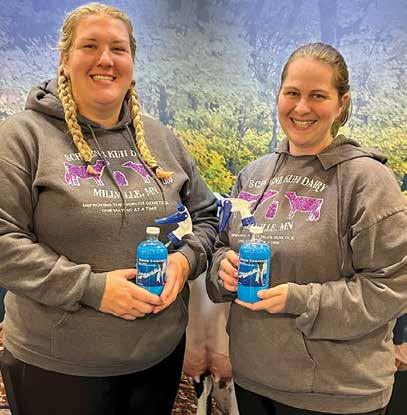




The farmsite

cut. For corn silage, we plant conventional corn that is tall with high grain yields. We believe this gives us high starch feed and higher tons per acre.
What is your average somatic cell count and how does that affect your production? Our somatic cell count generally is around 120,000. Our goal is to produce very clean, high-quality milk.
What change has created the biggest improvement in your herd average? Our single-row fresh cow barn added a couple thousand pounds to the RHA 14 years ago. In the spring of 2021, we updated the ventilation system in our main barn to a tunnel ventilation system and that added another 3,000 pounds to the RHA.
What technology do you use to monitor your herd? We have the DelPro Activity system from DeLaval to help monitor cows, both high and
low activity. With the DelPro system we also have daily milk weights. With both activity and milk, we can follow if cows are in heat, sick or humming along just ne. We have Dairy Herd Improvement approved meters, so each time we test cows the 7-day running average is what DHI uses for a cow’s milk weights. This makes for a very accurate and reliable test.
What is your breeding program, and what role does genetics play in your production level? Our breeding program is simple: use good bulls. We have had this philosophy for 50 years now. We mainly use high Type Production Index bulls that are 1,2001,500 pounds plus for milk, plus for fat and protein, and 1-2 points for type with sound feet and legs and good udders. We like pretty cows, but they must work. We also look at Net Merit and have an understanding of where it comes from. We are looking more at
Cow Conception Rate. We are a very genetic base herd. We like our high production, putting bulls in bull studs but also enjoy making a nice show cow or heifer for showing.
List three management strategies that have helped you attain your production and component level. Our top strategy is to use good bulls that have a high genetic base that will set you up for the long haul. Cow comfort is our second strategy. We love our sand bedding. As Bob Hagenow of Vita Plus says, “Clean, dry and comfortable.” We say, “We take care of our cows so they can take care of us.” Our third strategy is using high-quality forages. You need good forages to make optimal and economical milk.
Tell us about your farm and your plans for the dairy in the next year. Kellercrest is a genetic-based herd. We believe in longevity and old cows.
We just had our 21st cow go over 300,000 pounds of milk lifetime. We work as a leader trying to protect our local watershed from waste runoff. We have planted cover crops for almost 20 years now, and contour farmed for 50 years. We take care of our cows and land so they can take care of us. As for plans for this year, we just want to continue to try to make high-quality, economical milk. At some point, we would like to upgrade our dry cow facilities.




















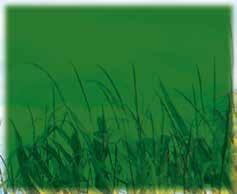
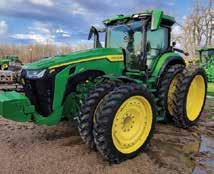




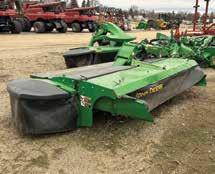




















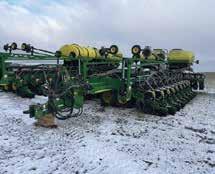

JD 1780 2001, #587172 .................................................................
JD 1790 2003, 24,000 Est. Acres, #579847
JD 1790 2014, 8000 Est. Acres, #584396
JD 1790 2009, 20,000 Est. Acres, #591065
JD 1790 2014, #583560 .................................................................
JD 1795 2023, 700 Est. Acres, #573347
IH 2150 2021, 4500 Est. Acres, #569307


3500



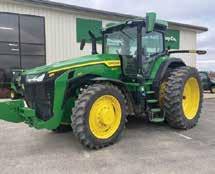












Contact one of the following dealers to
IOWA
Prairie Land Ag Supply Inc.
Rock Valley, IA
712-476-9290
United Dairy Systems, Inc.
West Union, IA
563-422-5355
Monticello, IA
319-465-5931
WISCONSIN
Advanced Dairy Spring Valley, WI
715-772-3201
Bob’s Dairy Supply Dorchester, WI
715-654-5252
Ederer Dairy Supply Plain, WI
608-546-3713
DeLaval Dairy Service Kaukauna, WI 866-335-2825
Joe’s Refrigeration Inc. Withee, WI 715-229-2321
Mlsna Dairy Supply Inc. Cashton, WI 608-654-5106
Professional Dairy Services Arlington, WI
608-635-0268
Redeker Dairy Equipment Brandon, WI 920-346-5579
The Scharine Group Inc. Whitewater, WI 800 472-2880 Mt Horeb, WI 800-872-3470
MINNESOTA & SOUTH DAKOTA
Farm Systems
Melrose, MN 320-256-3276 Brookings, SD 800-636-5581
Advanced Dairy Mora, MN
320-679-1029 Pierz, MN 320-468-2494
St. Charles, MN 507-932-4288 Wadena, MN 218-632-5416
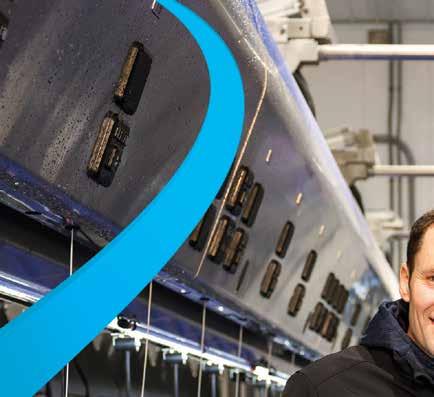



By Danielle Nauman danielle.n@dairystar.com
WASHINGTON — On Jan. 22, U.S. Sen. Ron Johnson of Wisconsin reintroduced the Codifying Useful Regulatory Denitions Act to the U.S. Senate — legislation he champions as being vital to Wisconsin’s cheesemakers and dairy farmers, alike.
The bipartisan bill, co-sponsored by fellow Wisconsin Sen. Tammy Baldwin, along with Sens. Ron Wyden of Oregon, James Risch and Mike Crapo, both of Idaho, and Bernie Sanders of Vermont, will create a statutory denition of natural cheeses in comparison to processed cheese products, a move Johnson says is imperative to protect Wisconsin’s cheesemaking industry in today’s everchanging world.
“There have been efforts to dene what natural food is, which gets pretty thorny with the way we process food,” Johnson said. “What is natural, versus what is really processed is going to become an even greater issue as we enter the age of ‘Make America Healthy Again.’”
Johnson said recent testimony about the legislation pointed
to how European countries approve food ingredients in a much different fashion than the U.S.
“Europe has approved something on the order of 400 ingredients, while in America we use a system called ‘Generally Recognized As Safe,’ with 10,000 or so ingredients listed — that’s a huge difference,” Johnson said. “You can imagine if suddenly somebody tries to start dening what is natural versus processed or ultra-processed. It could really impact our cheese industry.”
The bill will solidify the denitions for both natural and processed cheeses the industry has been adhering to for years, according to Rebekah Sweeney, the senior director of programs and policy for the Wisconsin Cheese Makers Association.
“The dairy processing industry has used the term ‘natural cheese’ for decades to help differentiate cheese made with fresh milk and dairy ingredients from pasteurized processed cheese,” Sweeney said. “We thank Sen. Johnson and the bipartisan group of lawmakers working to codify the denition of this commonly-used term in the CURD Act, and demonstrating their support of the dairy industry and transparency in the marketplace.”
This Congressional term is not the rst time the bill has
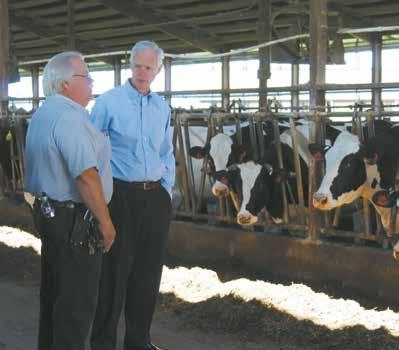
Sen. Ron
Lee
Wisconsin’s dairy industry in 2017 at a dairy farm in Ozaukee County, Wisconsin. Johnson recently reintroduced the Codifying Useful Regulatory Deni�ons Act to the U.S. Senate in an effort to set statutory deni�ons of natural and processed cheeses.
made the rounds through the U.S Capitol. The CURD Act was previously passed in the Senate but did not get approval in the House of Representatives, to Johnson’s frustration.
“This is one of those rare, completely bipartisan bills,” Johnson said. “People on both sides of the issue completely agree — natural cheese producers and processed cheese pro-
ducers — that we should have a denition of each. It’s just something that we ought to pass with no problem.”
The stumbling blocks the bill has run into in the past have had more to do with philosophical differences than with the intent of the bill, Johnson said.
“I have empathy for individuals who have a real problem
with federal government dictating these things,” Johnson said. “That is the primary opposition.”
Previously the bill had been presented as a stand-alone piece of legislation. Johnson said that is somewhat unusual for a bill like the CURD Act, and cited that as a reason it may have gotten held up in the House. A strategy is being developed to attach it to other must-pass legislation, such as the farm bill, he said, adding he has already had discussions with the chair of the ag committee.
“There will be hurdles to overcome,” Johnson said. “But, I have overcome them before and I believe I will again. We should be able to pass it through the House as well, but it is going to take an effort.”
At this time, Johnson said he is unsure who will sponsor the bill in the House, or when it will be introduced to that chamber.
Johnson believes the legislation is worth ghting for, for the benet of Wisconsin’s dairy industry.
“I’m from the private sector, and speaking from a business standpoint, stability is very important to doing business,” Johnson said. “The worst thing for business is volatility — rules that change can impact things. Dening these terms brings certainty to the market. That is good for dairy farmers and cheesemakers, alike.”

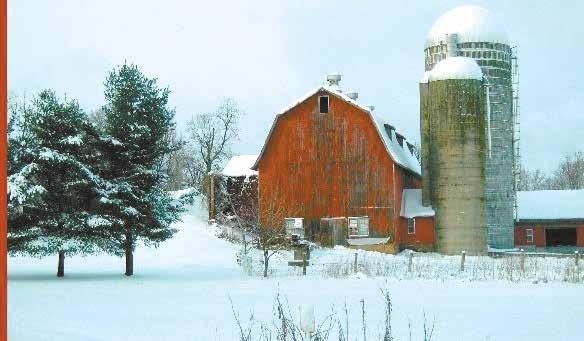
“Do


























Reduce cost, intake, over-conditioning with high-ber diet
By Stacey Smart stacey.s@dairystar.com
MARSHFIELD, Wis.
Forage-based diets containing large amounts of corn silage or other high-quality forages often exceed the energy needs of growing dairy heifers. When consuming such diets, heifers usually eat more than they need, leading to undesirable weight gain and over-conditioning.
Research has shown that increasing ber in the pregnant heifer diet reduces unnecessary intake. Diets focused on ber typically reduce feed intake in pregnant heifers by 10%.
Matt Akins is a dairy scientist and research leader in the Environmentally Integrated Dairy Management Unit with the U.S. Department of Agriculture-Agricultural Research Service’s U.S. Dairy Forage Research Center.
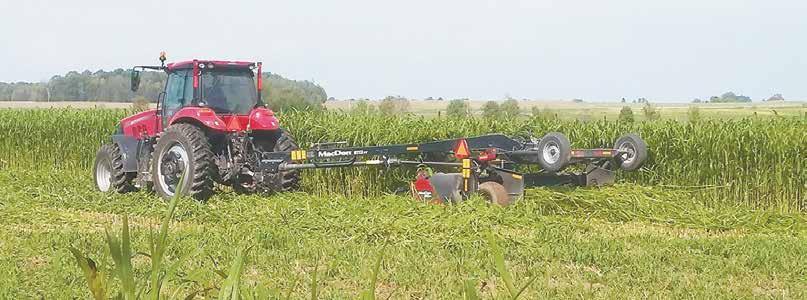
Sorghum-sudangrass is cut Sept. 22, 2017, at the University of Wisconsin-Marsheld Agricultural
eld, Wisconsin. Research studies have shown sorghum-sudangrass to work well as a high-ber forage in
to control feed intake.
Having more body fat can cause hard calvings and problems into early lactation.”
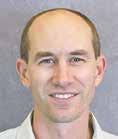
“We don’t want excessive condition going into lactation,” Akins said “An ideal body condition score for heifers is 3.25-3.5. We don’t want heifers coming in at 4-plus.
Akins and his colleagues have conducted studies using higher ber forages in the diets of animals that have been bred or conrmed pregnant. Over the last several years, their studies have focused on forages capable of increasing ber and diluting energy in rations.
“Feeding a higher ber diet with lower energy was the goal, and we found that heifers fed this diet have more optimal weight gain,” Akins said. “They eat less and gain a more appropriate weight, compared to
feeding a higher energy diet based on corn silage and alfalfa.”
Akins’ work is based on the fact that dairy heifers generally eat about 1% of their body weight in ber each day.
“The rumen can only t so much ber in it,” Akins said. “We can use that to our advantage by feeding higher ber diets to control feed intake.”
Nutrition targets for the pregnant heifer diet are 50%55% neutral detergent ber, 55%-60% total digestible nutrients and 13%-14% crude protein.
“That puts us pretty close to where we need to be for energy,” Akins said.
When feeding a high-ber diet, Akins has found that
feed intake is often reduced by 5%-15%, depending on forage type and ber levels, with a 10% decrease being typical.
Akins said a gain of 1.82.2 pounds per day is ideal growth for a Holstein heifer, and heifers on these higher ber forage diets are reaching this level of growth. On the other hand, heifers consuming diets of corn silage and alfalfa containing 45% NDF and 65% TDN were gaining 2.5-3 pounds per day in Akins’ studies.
“If we go above 2.2 pounds, heifers start to get overweight and have too much condition,” he said. “They put less growth into muscle and more into fat, especially as they get closer to
maturity.”
Akins said this is particularly problematic in connement situations where heifers get less exercise. In ultrasounds on pregnant heifers consuming a high-ber forage diet, researchers saw less fat growth on heifers’ backs and less internal body fat, particularly on the kidneys.
Furthermore, frame development on heifers is as good or better on these diets as it is on a higher starch corn silage diet.
Through their testing of various forage options, Akins and other researchers have discovered that any higher ber forage can accomplish these weight goals.



























He said sorghum-sudangrass works fairly well as do other types of straw. Wheat straw, corn stover, and Eastern gamagrass are some of the forages Akins and colleagues have conducted studies on at the University of Wisconsin-Marsheld Agricultural Research Station.
“Any of these three works well, especially gamagrass in a chopped corn silage,” Akins said. “Corn stover tends to have problems with sorting if it’s not chopped down ne enough. It’s necessary to process wheat straw and corn stover more aggressively to ensure heifers eat it.”
A distant relative of corn, Eastern gamagrass is a perennial warm-season grass that can survive winter conditions. It thrives on a one-cut harvest system, with yields maximized during mid-to-late September and concentrations of neutral detergent ber ranging from 75%-80%. During feeding trials, heifers did not exhibit sorting behaviors with Eastern gamagrass.
Akins plans to do additional testing on other forages in the next few years.
“There are a lot of options people are working with,” he said. “It depends on the agronomic system on your farm and soil conditions.”
Akins said one example that can potentially work well in heifer or dry cow rations is long-day corn silage. It never fully develops an ear and therefore yields a lot of forage tonnage without grain.
Akins and his team continue to investigate new types of forages and plan to do feeding trials with long-day
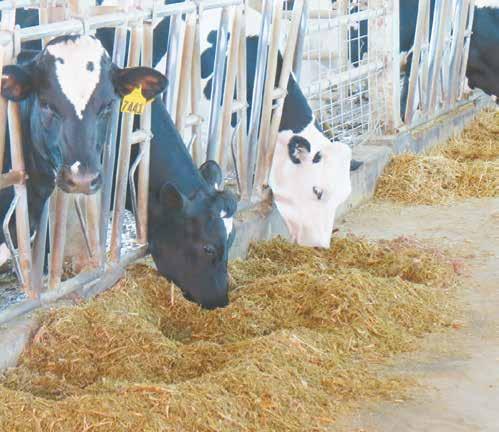
Pregnant heifers eat a high-ber ra on at the University of Wisconsin-Marsheld Agricultural Research Sta on near Marsheld, Wisconsin. The diet contains Eastern gamagrass as the high-ber forage source, in addi on to corn silage and alfalfa silage as the forage base.
corn silage in a couple of years. They are also looking at pearl millet as a future option.
“Depending on how you manage it, pearl millet would be a fairly good candidate for this type of diet,” Akins said. “We did some test plots on it last summer and are going to do more in the upcoming year.”
Large-scale eld studies and feeding studies on pearl millet are in the works for 2026. He said they rst need to tweak agronomically how to plant the crop and get a better stand.
From 2021-2022, Akins was part of a study done on the perennial intermediate wheatgrass crop, Kernza. After harvesting the grain, the stem and
leaf material is harvested like wheat straw. During a feeding trial, the team found that Kernza worked well in a heifer diet and could be a good replacement for wheat straw.
Lower feed costs is another benet of a ber-based diet. Most high-ber forages cost less to produce than corn silage or haylage. Akins said farmers can also purchase these forages on the market fairly economically.
“Sorghum-sudangrass bears a pretty signicant cost reduction at a savings of 20-25 cents per animal per day,” he said. “A single-cut system is ideal for getting the highest ber value.”
A single harvest for these highber forages at bloom stage produces 1.5-2 times more biomass than a 2-cut system, Akins said.
Dan Olson, owner of Forage Innovations, said crops that can be grown in between other grain crops lower the cost per pound of dry matter and help spread out land cost.
“Finding crops that t in between years of corn, such as sorghum-sudan, can really help,” Olson said.
At Forage Innovations, Olson and his team unite agronomy and nutrition to optimize forage systems. Olson works with about 300 dairy farms in 27 states and also milks cows on his farm in northeast Wisconsin.
Olson said pregnant heifers do well on a single-cut product like sorghum-sudan or a forage sorghum.
Turn to CLOSER LOOK | Page 27




Eastern gamagrass, a perennial warm-season grass that can survive winter condi ons, is pictured in a eld in Springeld, Tennessee. Eastern gamagrass is a high-ber forage that thrives on a one-cut harvest system.
“When you combine a warm season annual like sorghum-sudan with a winter small grain like triticale or cereal rye to maximize the cool portion of the year, you can regularly get 10 tons of dry matter in the Upper Midwest,” Olson said.
One of Olson’s clients in South Dakota is producing cereal rye and sorghum-sudan with out-of-pile costs at 4.5 cents per pound of dry matter.
“That’s 3 cents a pound less than wheat straw, and it’s a better product,” Olson said. “He has the ability to save 70-80 cents a head per day on ration costs.”
This strategy also helps promote soil health while providing more crops per acre.
“My favorite crop is a (brown midrib) photoperiod sensitive sorghum-sudan,” Olson said. “It has a lot of ber and stays vegetative and growing until mid-September. It’s cheap to grow, which helps lower feed costs.”
Dairy farms have options when it comes to supplementing high-ber forages into pregnant heifer diets. Akins said working these forages into the ration should be done in tandem with advice from a nutritionist.
“Work with your nutritionist in getting feed tested properly for nutrient values and in balancing diets properly for ber, energy, protein, minerals and vitamins,” Akins said. “That’s critical.”






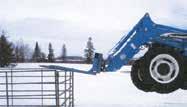








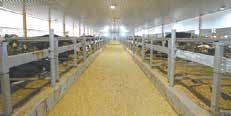




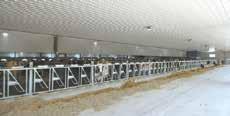
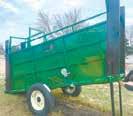





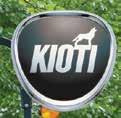























































By Dan Wacker dan.w@dairystar.com
WAUKON, Iowa — Jeremy Peake has taken boosting cow comfort into his own hands. Peake transitioned from milking cows in a stanchion barn to a swing parlor, pouring concrete and using his stick welder to build the facility himself with the help of friends and family.
Peake operates a grass-fed organic dairy near Waukon. Peake’s herd of 40 Jerseys and Jersey crossbreds are pastured on 80 acres. His transition project started in May 2022 and was operational by March 2023.
“I had thought about making the switch for a long time,” Peake said. “When our buyer decided to stop purchasing from cows housed in stanchion barns, we knew we had to make a change.”
The transition presented two options: remodel the barn to tie stalls or build a parlor.
“I thought the parlor would make more sense,” Peake said. “I thought it would work well right outside the milkhouse. We didn’t have to change much with the pipeline either, and that’s partly why it worked so well.”
Everything in the milkhouse stayed the same including the milking units. For now, Peake continues to take units back to the milk house for washing.
Peake milks with six units, so his setup is like a double swing, with units moved twice on each side to get all the cows milked.
The parlor has the potential to be 10 units. If Peake upgrades, there are plans to add a wash in place for the units and automatic takeoffs.
“I wanted it simple to start out,” Peake said. “There’s a blueprint in place to milk cows faster as the herd grows.”
Peake, in conjunction with Larry

Jeremy Peake stands Jan. 7 in the parlor he built on his farm near Waukon, Iowa. Peake used scrap steel from the farm and gathered other materials from a local scrapyard.
Tranel, an extension specialist with Iowa State University, came up with the plan for the parlor. Peake toured several parlors, taking ideas from each to congure his model.
“I knew what I wanted to make,” Peake said. “Knowing that from the beginning was important.”
Peake gathered the materials he needed and went to work to bring a new milking style to the farm he had been working on for the past 24 years. He used scrap steel he had on the farm already and made trips to the local scrapyard and TJ’s Fencing Company Inc. in Harpers Ferry to gather the rest of the materials.
Using a stick welder, Peake went to work to make his parlor a reality. He also needed to pour concrete, so he recruited friends to help him.
“I did most of the forming myself, with help from our summer intern, Shaundra, and my kids,” Peake said. “My dad helped me with some of it too. I helped other people pour concrete before, so I had a good
background in it. It’s not perfect, but I’m happy with it and we learned more along the way.”
Lang’s Dairy Equipment in Decorah assisted with the pipeline transformation.
With the change in the milking barn, came a change in cow housing. Peake used Tranel’s Cow Tell design to create an open-air free stall area outside the milking barn, with a sand-pack bedding and straw cover during the winter.
This was not Peake’s rst time taking on a renovation. He has a background in home remodeling from helping his dad at his dad’s oor covering and decorating business in Decorah.
“I helped Dad with somewhere around 10 different house projects, anything from light cosmetic changes to gutting and renovating the majority of the house,” Peake said. “Helping with these projects as a kid really gave me an eye for seeing what is possible in a space.”
As a child, Peake made trips to his grandpa’s farm to help with the dairy and orchard there. Peake Orchards is now owned by Peake’s father.
Working with his grandpa on the farm ultimately led Peake to a life in dairy and bringing cows back to the farm.
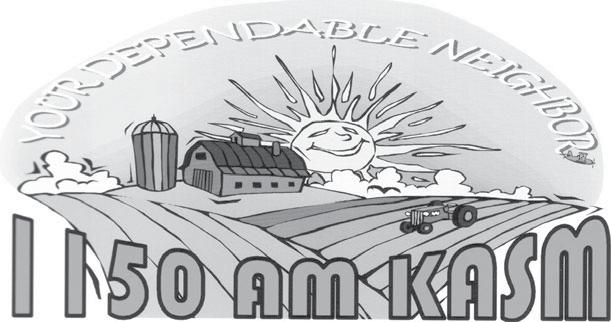

By Danielle Nauman danielle.n@dairystar.com
MERRILL, Wis. — A true acionado of ice cream might not need a reason to enjoy a scoop or two of the creamy frozen delight for breakfast. But for the rest of the world, National Ice Cream for Breakfast Day rolls around each year, celebrated on the rst Saturday of February.
For the fth time, Shelby Dzwonkowski, owner of The Grand Stand ice cream shop in Merrill, hosted an event to commemorate the day, which took place Feb. 1 at Cosmo Hall in Merrill.
“I feel like someone who didn’t live in Wisconsin came up with that idea,” Dzwonkowski said. “We do a full breakfast to gain more interest because ice cream isn’t necessarily in the front of everyone’s mind when it’s 30 below outside but it is denitely our focus, once they’re here.”
While the holiday was not born in Wisconsin, pop culture lore places the origin of the event in Rochester, New York, home of Florence Rappaport in the 1960s, who started it in an effort to entertain her housebound children on a cold and snowy winter day.
Dzwonkowski had never planned to open an ice cream shop, although her family owned and operated Merrill’s movie theater. Then, one day she ordered Chocolate Shoppe Ice Cream at a restaurant and an idea was planted.
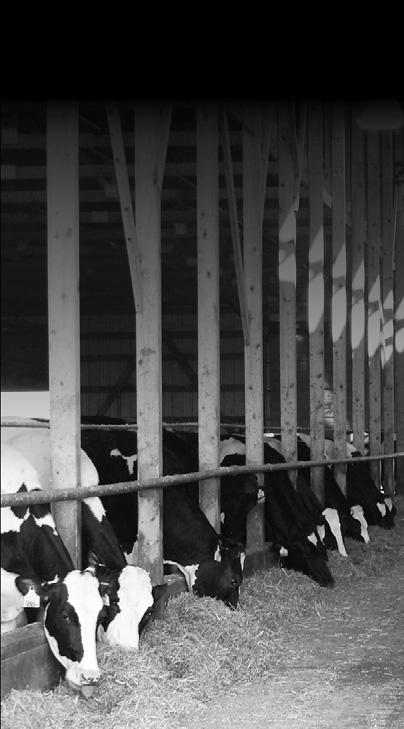

Shelby Dzwonkowski and Em-Moo-Lee the Cow welcome guests to The Grand Stand’s Na onal Ice Cream for Breakfast Day celebra on Feb. 1 at Cosmo Hall in Merrill, Wisconsin. This marked the h me Dzwonkowski has hosted the event.
“I’m an ice cream snob, and it was so good,” Dzwonkowski said. “I kept the napkin, because I said that someday, somewhere I was going to sell this brand of ice cream. We never intended to have an ice cream shop, but here we are.”
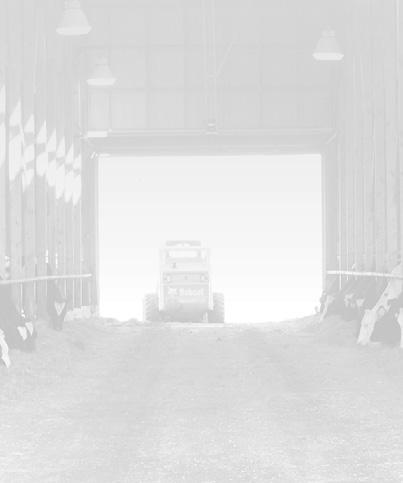





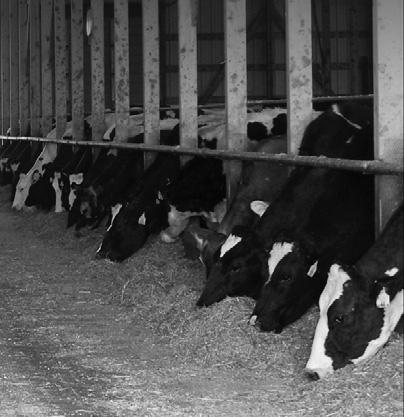
Ten years ago, Dzwonkowski opened The Grand Stand, selling Chocolate Shoppe Ice cream, a premium, high milk fat product made in Madison.
“I was a stay-at-home mom, and when my kids went to school, it turned out I didn’t have a job anymore,” Dzwonkowski said. “We started an ice cream shop. Our rst location was a yearround, sit-down shop.”
Five years later, the building The Grand Stand currently occupies — a seasonal, walk-up facility located near the Merrill Area Recreation Complex, that was formerly a Briq’s Soft Serve — became available. The Dzwonkowskis jumped on the opportunity to purchase the building.
“That has been really big for our business, being close to the MARC,” Dzwonkowski said. “We’re the place everyone goes to celebrate a win or to pout






after a loss.”
Becoming part of those traditions has brought unexpected joy to Dzwonkowski.
“At my rst shop, I overheard a dad ask his daughter if they should get their ice cream to go or eat in,” Dzwonkowski said. “The little girl told her dad it was their tradition to eat it at the shop. It hit me then. We don’t just sell ice cream, we’re somebody’s family tradition, making memories. We’re part of their team event and experience. I’ve gotten to know a lot of people and it’s an honor to have a place in their family.”
A connoisseur of hand-scooped ice cream, Dzwonkowski added soft-serve to her menu with the move.
“I spent the rst ve years of my ice cream career telling people soft serve wasn’t ice cream,” Dzwonkowski said. “Now I take it all back. Soft serve has its place. Our fusions and shakes are denitely easier to make with soft serve — but I’m still a hand-scooped person, and I always will be.”
This winter, a new opportunity for growth presented itself.
A Chinese rickshaw-style vehicle became available and Dzwonkowski took on the challenge of turning it into an ice cream truck that looks like a giant wafe cone. The truck will allow Dzwonkowski to take her ice cream shop mobile, booking remote events.
In addition to specializing in ice cream, The Grand Stand serves a full menu, which Dzwonkowski says creates an additional draw, bringing in a lunch crowd from the nearby industrial park.
“We try to keep everything as Wisconsin as we can,” Dzwonkowski said. “We sell cheese curds made right here in Merrill, we get our soft serve from a local dairy and we use Klement’s brats and Sprecher’s root beer, both made in Milwaukee. We didn’t initially intend to do that, but the more we worked with local people through the Chocolate Shoppe, the more important it became to us.”
Operating her business with a Wisconsin-centric focus has opened her eyes to how much the state’s economy is impacted by agriculture, Dzwonkowski said.
“People that aren’t involved in the dairy industry or in agriculture might not realize how big of a deal it really is for our state,” Dzwonkowski said. “That is why we try to keep our menu local to Wisconsin. Being from the cheese state, it becomes something you are really proud of.”





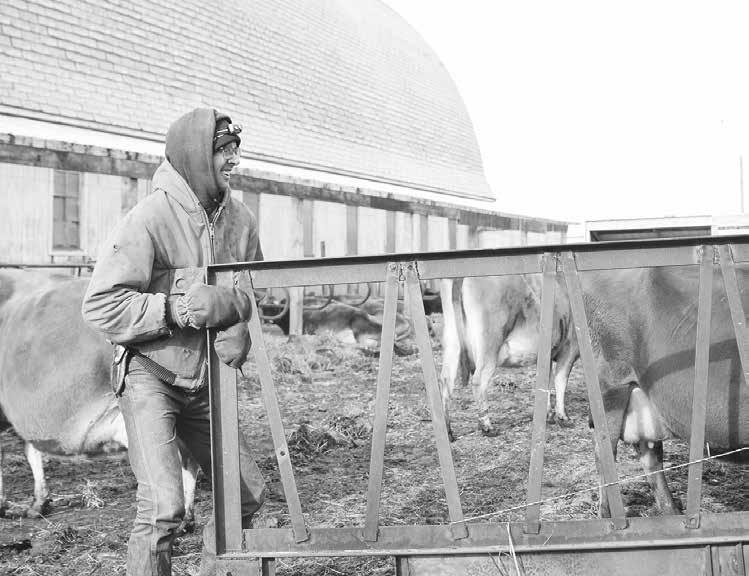
Jeremy Peake opens the gate to feed his herd of 40 Jerseys and Jersey crosses Jan. 7 near Waukon, Iowa. With the building of his parlor, Peake worked with Iowa State University Extension to transi on his herd to an open-air freestall area.
“Grandpa had to sell the cows in 1995,” Peake said. “I was 15 at the time, so when we’d come over here, I’d miss the animals.”
A neighbor began renting the land, but the barns stood empty. In 2001, Peake decided to quit his job as a herdsman and start milking on his own. As part of his dairy science program at Northeast Iowa Community College in Calmar, he had completed a 3-month internship with Dan and Bonnie Beard on their grazing dairy near Decorah, which turned into two and a half years of employment.
“My internship really helped me learn more about grazing and grass management,” Peake said. “Learning from Dan and Bonnie and my uncle, who also had a grazing herd, was really helpful.”
With the barn sitting empty for six years, Peake needed to make changes before bringing back a milking herd.
“I made some upgrades,” Peake
said. “We got rid of the older 1.5inch pipeline and changed to a 2-inch line. We wanted to be set up to produce Grade A milk.”
Using what he learned at NICC, along with family advice, Peake transitioned from a conventional herd to organic.
After a few years of buying grain for the herd’s ration, Peake decided to become grass-fed. This allowed him to produce organic milk without having to invest in as much equipment and labor.
“I’m not a crop farmer,” Peake said. “I like making hay, but I don’t like to grow crops. That’s why it worked out so well for us to be a grass-fed dairy.”
Experience with change has helped Peake continue to build up his dairy.
“My end goal is to put up a greenhouse barn,” Peake said. “That way we can get the cows inside during the winter too.”
































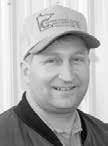

By Danielle Nauman danielle.n@dairystar.com
THORP, Wis. — Tom Lipinski was a dairy farmer, by birth and by choice. He dreamed of farming long enough that all his grandchildren would have memories of Grandpa’s farm.
Life had other ideas, forcing Tom’s retirement nearly three years before his planned retirement age of 67 — a timeline difcult for him to accept.
“At the time I was tired, but I didn’t know it,” Tom said. “We had started thinking about what would come next, after the farm — we really had no idea what that would be, but I thought we still had time. I wasn’t ready to retire yet, my youngest granddaughter was only 2.”
Throughout his career, Tom milked 50 cows on average, while his wife, Karen, worked off-farm
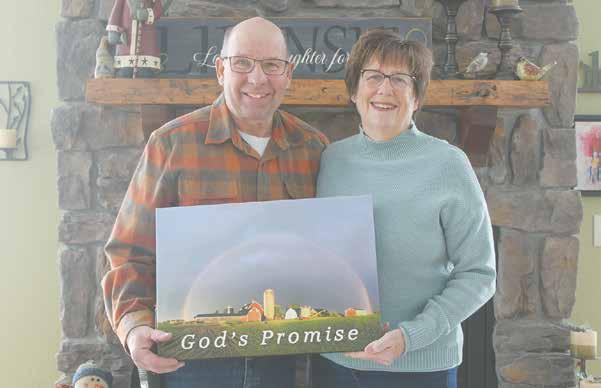
Tom and Karen Lipinski share the canvas print of a photo of their Clark County farm beneath a full rainbow, Jan. 27 at their home in Thorp, Wisconsin. Tom struggled with a forced re rement, due to injury, three years before he planned to complete his dairy farming career.
as a teacher, and later principal, of the local Catholic school, and helped on the couple’s farm near Thorp as needed. Tom began his dairy farming career in 1978, working alongside his father, before purchasing the farm after he
and Karen married in 1979.
One thing Tom knew for certain when retirement came, he wanted to move from the farm.
“It was important to me to see the farm continue as a dairy farm,” Tom said. “I knew if we


stayed for a length of time beyond the cows, the buildings would deteriorate and it would lose value as a dairy farm. I wanted to see cows there, and little kids running through the yard.”
The wheels of Tom’s preemp-
tive retirement were set in motion in the fall of 2019, when he began experiencing shoulder issues.
“I thought if I got help and could rest my shoulder, it would get better and I could keep farming,” Tom said. “It didn’t get better and turned out that I had torn my rotator cuff.”
Facing surgery, the Lipinskis decided to sell the majority of the cows, keeping dry cows and youngstock, so Tom could return to milking following surgery.
“I thought I’d be able to coast through the next three years and reach my goal,” Tom said.
Tom prepared for the surgery, selling off the steers he was raising to reduce youngstock chores. The milking cows left Feb. 27, 2020, the day before his surgery.
Tom’s plan was to be shipping milk again within 60 days, before his state licensure lapsed.
The world had other plans.
“Then COVID hit and everything shut down,” Tom said. “All the dairies had too much milk — no one was going to want my milk because they had no place to go with it and they surely didn’t want to send a truck to pick up the small number of cows.”
















NewJCBTM320Wheeloader 125hp,17'liftheight,6390lbcap $173,900lessdiscounts(or)0%






New/DemoJCB407compact wheelloader 64hp,3666lb payloadcapacity,22mph






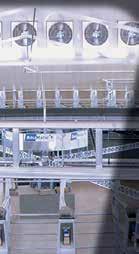



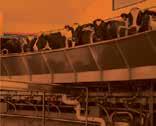
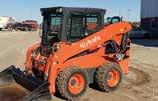


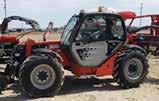









about 50 cows most of his life.
Instead of picking up where he left off, Tom saw his 60-day window disappear.
“I was milking cows and trying to gure out what to do with it, dumping milk,” Tom said.
While Tom was uncertain of his future, he said God began prodding the Lipinskis down another path.
“We had our eyes open, looking for a long time, wondering what we wanted to do, where we wanted to go,” Karen said. “In our eyes, there weren’t many places that had the things we wanted: close to town but not in town; a little land; some woods and a stream. At the time, we didn’t have a clue what might come next.”
The Lipinskis believe God was at work in their lives when Karen happened upon what turned out to be the answer to their prayers — their dream home.
“Shortly before I fractured my hip, Karen saw the house on a Sunday evening,” Tom said. “We had a viewing Monday afternoon and immediately made an offer to purchase, which was accepted that night.”
A few days later, Tom’s dairy farming career came to a full close when he and his hired help repaired the track for the haymow door.
“I was still going to therapy for my rotator cuff, but I had been able to get all the crops in,” Tom said. “I built staging to work on the track — it wasn’t great, but I gured it would only be up about an hour. It came down, with me on it, an hour and ve minutes later.”
Tom fell on the concrete below, fracturing his hip.
“When I came home from the hospital, I called the auction house and told them to come pick all the cows up — I knew we were going to be out for sure,” Tom said. “I watched the last of the cows loaded while I
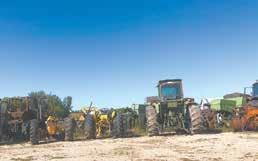
was on crutches.”
With a new house waiting for them, the Lipinskis continued in limbo.
“I hadn’t gured out what to do with the farm, and I hadn’t really accepted the end of my farming career,” Tom said.
After the nal cows left, neighbors began inquiring about the farm. It was purchased by a neighbor with an adjoining farm, for his son to farm in the future. The Lipinskis scheduled a nal farm auction in October, and a week later they made the move to their new home. The evening of the auction, Tom was presented an emotional gift: a canvas print of a photo of his beloved farm sitting beneath a full rainbow — a sign the Lipinskis saw as God fullling his promise to their family.
In their retirement, the Lipinskis found time to visit their family and take part in activities they enjoyed, but Tom felt a piece was still missing.
He learned of a need within the local re and ambulance services and thought he could ll that need. Three years ago, he signed on to serve as both an ambulance driver and a tender truck driver.
“It was a need I could ll and it was the piece that really completed our retirement,” Tom said. “I like doing it, it fullls me. I can stop what I’m doing and go on call.”
Through all the storms he weathered as a dairy farmer, having his career come to an end before he was ready was the most difcult, Tom said.
“God’s promise, that has been the focal point,” Tom said. “That rainbow told us that everything was going to be okay, that we just had to trust. How we got here is mind-boggling. It wasn’t luck, it wasn’t happenchance — it wasn’t anything other than providence.”
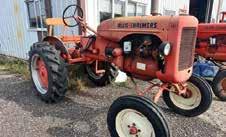
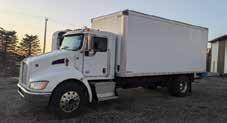





















When I started my graduate assistant position in the athletic department at Indiana State University in 2014, I brought with me a few years of experience from a Division III school at the University of Wisconsin-La Crosse, and the grittiness of growing up on a dairy farm.
Growing up, it was all farming and sports, and the life lessons both can teach you. I think a lot of my experience in sports came from the basic principles I learned on the farm. When a problem presented itself, like dealing with a defensive lineman who was bigger than me, or a tie game in the bottom of the last inning, or calves needed to be watered but the well was frozen, what were we going to do? Were we going to sit down, play the “woe is me” card and lose, or were we going to gure out a solution and get the job done? That wasn’t even a question, it was always guring out how to take care of business.
Back to Terre Haute. I was beginning my rst baseball season as a graduate assistant sports information director. My job duties were scoring the game on a laptop, making hits and error calls, running social media, writing a postgame press release and working with a photographer for images to use in graphics.
We were hosting a neutral site game in Indianapolis. We were at a facility that hosted a lot of high school level competitions. So, there was a denite difference between a typical Division I baseball setup
and a high school travel ball facility. I got up to the press box area, where my usual perch for games was, and I saw there wasn’t a table. My options were to call my boss and complain about the lack of resources or gure out a solution.
That brought me back to my sports and farming background. No one is going to sit around and feel bad for you. Your job is to gure out how to make it work. I could have called my boss and complained about it, but what was that going to solve? Nothing.
So, I looked over in the corner, saw an extra chair and set up a makeshift desk. I stood during the game to make sure I could see the entire eld and did my job. That’s just what you did on the farm, and when you were in the eld, be it a hay eld or a ball eld. You found a way to get the job done because someone was counting on you. In the hay eld, it is the cows and your family. On the ball eld, it is your teammates. After working through the initial problem, you can reassess and nd a better solution later, but you have to keep moving forward.

and honestly, no matter how many games I scored, it felt like there was at least one game that did that. But overall, I said it went well, we won, and that was the important part. I had my chair desk, and it all worked ne. He stopped me there and he made me explain what I meant by chair desk. It was strange, he was surprised that I worked through the problem and did not call him about it.
By Dan Wacker Staff Writer
Now I understand how small of a problem not having a table to sit a computer on is in the grand scheme of things. It is nothing like trying to thaw a waterer in negative-degree weather, or replacing a sickle section on the haybine in the middle of chopping, or guring out a case of mastitis. The same principles apply. The agriculture business doesn’t just sit around and wait for you to call to complain. You identify the problem and nd a solution. Now the chair desk wasn’t the most optimal solution, but it worked. And that night I had time to get over to the store and nd a small table I could use the next day. Solve the problem, reassess and improve as time allows.
When my boss called me to see how my rst game went, I told them that there were a couple of plays that had me second-guessing a hit vs. an error,
This is just one example of how life lessons learned on the farm continue to carry over in life, lessons that I am grateful for every day.
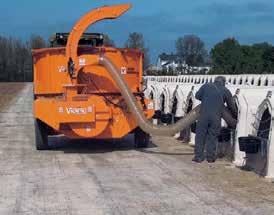
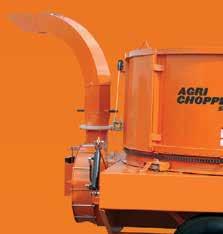


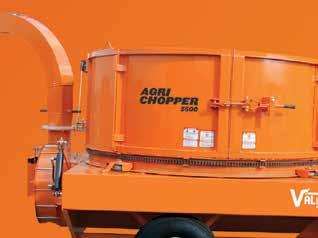











By Jim Mlsna Columnist
“Common sense is not too common.” This was one of my University of Minnesota veterinary school professor’s favorite sayings. I think of this saying often, but what is common sense?
Most of us would say that common sense is something like: You should put a coat on if going out into sub-zero weather. Or turn the faucet off after getting a glass of water. Or don’t drive across the lawn in the spring. Or don’t put your hand on a hot burner. But what if you were never taught to to conserve water? Or think you’re tough by going outside underdressed in cold weather? Or have never drove on grass when the frost is leaving?
A friend recently tried to describe common sense by an old denition. In 1918 it was common sense that everyone knew how to harness a horse and hook up a buggy. That denition changed a lot in the next 100 years. Now, my Amish neighbors still know how to harness a horse, but I sure don’t.
How would you dene common sense?
Farmers tend to be basic thinkers. We want kids and employees to have common sense. Common sense says, “If you open it, then close it.” Or, “Leave it the way you found it.” We don’t want to ask you every time if you shut the gate in the pasture. Common sense would tell you that to keep the cows home, the gate needs to be closed. But the hunter who walks through and doesn’t close the gate due to his lack of common sense will probably lose his hunting privileges.
I wonder if common sense today is lacking because of the precautions taken to lower a person’s chance of injuries or illness. Nowadays we have kids who are prevented from having those experiences and thus are prevented from learning common sense.
Is our society being so fearful of all potentially risky things that our kids can’t develop common sense? Playing on a phone or a tablet is physically safer, but it prevents kids from playing, talking and taking risks with other people — all of the things that help them learn common sense.
Ever watch kids playing in the rain? Common sense says they should have rain coats on and it is easier to stay dry inside. What about the fun they have in the mud? I would argue that it can actually prepare them for the day the cows get out, which only seems to happen after a rain on our farm.
As my vet school professor preached – “Common sense is not too common” – he may have been right. As our society gets more specialized, it is hard to be educated in a lot of areas. I wonder if common sense shouldn’t be redened as a


personal value and then extended into our professions. Shouldn’t we teach our kids that walking on a highway with a bright vest, or on the correct side of the road, is common sense? Or about helping a person who has fallen down to get up? Or not talking trash to someone who has had a bad day? Common sense really starts in the home. Dairy farmers have the world’s best environment to teach common sense because kids and parents work and play together all the time. My father
taught us that we couldn’t eat until all the animals were fed. My mother couldn’t buy groceries if we broke too many of the eggs she had to sell. Unlike the hunter, we learned the hard way what happens when you leave the gate open. On a farm every action has a reaction. Bad deeds have repercussions; good deeds lead to happy moments. Those experiences created common sense. Even though we went to public schools, we were home schooled in the subject of common sense.
Our popular HL940XT, HL955XT, and HL960XT all feature over 11 feet of dump height clearance to reach over taller feed mixers. These popular models are powered by fuelefficient and reliable Cummins engines, plus high-quality ZF transmissions and axles.

Our loader cabs are generously-designed to be spacious and cozy with great features like: heated air-ride seats, bluetoothenabled radios with hands-free calling, tilting / telescoping steering columns, twoway radio provisions, large 7” color and touchscreen monitors, heated mirrors and high-powered automatic climate control systems.
Service is designed to be easier on Hyundai loaders. Our machines are equipped with remote-mounted fluid drains, ground level access to engine oil filters and fuel filters, fully-tilting engine hoods, swing-out oil coolers, maintenancefree center pivot pins, remotely-located grease zerks and our industry-leading telematics solution, Hi MATE (free for 5 years).








We design our loaders to be the safest machines on the jobsite, featuring standard rear-view cameras, optional 360 view camera systems with dynamic object detection, excellent operator visibility, convenient anti-slip steps and large grab rails, cab, attachment and rear-grill work lights, and automatic




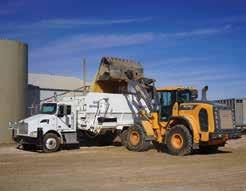









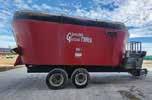

We Americans have been spoiled by technology. Flip a switch and the lights come on; pick up your cell phone and instantly begin to waste time watching funny cat videos. If you want a triple-mocha-Frappuccino, all you have to do is stop at a Starbucks, whip out a credit card and begin to make monthly payments on what is essentially just a fancy cup of coffee.




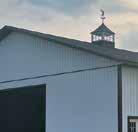
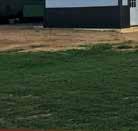


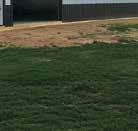


show. As luck would have it, dairy day included an ice cream making contest.

All of this convenience reminds me of a guy I saw on YouTube who bought a 12-volt TV for his kids. He hooked his kids’ TV to a car battery, which was hooked to an alternator, which was spun by a bicycle. His kids could watch as much TV as they wanted but had to pedal for the privilege. This eliminated their habit of sitting in front of the tube and mindlessly zoning out. There are people who didn’t rouse from their TV trances until they were married and had kids of their own.

There were nine ice cream making booths at the show. Some went all-out in the design of their booths, such as the business that embraced the outdoors theme. Those guys really did a swell job. Their booth featured reeds and cattails along with a real, live, battery-powered duck decoy. One of the guys who was manning the booth added to the outdoorsy atmosphere by occasionally quacking on a duck call.

By Jerry Nelson Columnist
Not that they needed to attract any wildlife. There were plenty of humans who were attracted to their ice cream-making activities, despite the fact that their avor had been given the ominous moniker Hunter’s Surprise.
The point is, we really have it good in this great land of ours. Perhaps we would appreciate everything more if we had to wait, or even – the horrors – perform physical work before we receive our treats.
That’s how it was when I was young. Ice cream would be a prime example.
I’m sure that my parents could have bought ice cream at the store. But why do that when you can make it at home for free? We had cream and milk from our Holsteins and eggs from our chickens. All we needed from the store was a little sugar.
But what about ice? That was also free for the taking but only at certain times of the year. My family’s ice cream consumption was generally limited to the colder months.
Spinning our ice cream machine’s hand crank was no fun. Upon reection, its unpleasantness must have meant that this was yet another sneaky ploy that our parents used to help us kids build character.
Towards spring, when ice became scarce, we would resort to stufng snow into the ice cream maker. Snow doesn’t have the chilling oomph that ice does, so it took a lot of snow. Snowmen were often sacriced on the altar of ice cream.
Making our own ice cream taught us patience. I remember trying to cheat the process, popping off the lid to sneak an early taste. For some reason, ice cream glop isn’t as nearly as pleasing as honest-to-goodness ice cream.
That all came back to me some years ago when I attended a winter farm show. It was dairy day at the
I chatted with one of the guys and he swore that there was no roadkill in their frozen concoction. Even so, I checked it carefully for any stray raccoon hairs before I tasted the proffered sample.
A pair of young ladies at another booth made an ice cream they called Beaver Tracks. This was quite tting as their sponsor was a company that sells wood chips.
I asked one of the young ladies if their ice cream contained any woodrelated products. She coyly said no, but I remained suspicious. I took a bite of their Beaver Tracks ice cream and found it to be quite delicious and devoid of any woodiness. It did, however, contain small pellet-like candies that may have represented a certain beaver byproduct.
I was extremely gratied when rst place in the contest was awarded to an ice cream that had been made patiently, with a hand-cranked machine.
Some years back, a scientist guy was playing with liquid nitrogen and discovered that it can be used to make ice cream. Liquid nitrogen is a jillion degrees below zero; ice cream can be made with it almost instantly.
This represents a dangerous precedent, one that can only send our great nation farther down the slippery slope. I vote that we outlaw homemade liquid nitrogen ice cream production and decree that all in-home ice cream machines be human-powered.
Jerry Nelson is a recovering dairy farmer from Volga, South Dakota. He and his wife, Julie, have two sons and live on the farm where Jerry’s greatgrandfather homesteaded over 110 years ago. Feel free to email him at jerry.n@dairystar.com.



Veterinary Wisdom

Our practice has been compiling a dairy herd benchmarking spreadsheet every year for nearly 15 years. We use DairyComp 305 data from most of the farms we work with who utilize the program on-farm for management. All farms included this year are freestall barns and include rotary parlors, robots and more traditional parallel/herringbone parlor setups. Some farms utilize a heifer grower to raise youngstock and others raise their own youngstock. This article will present averages for a few of the 79 parameters we measured. When the term average is used, both the mean and the median will be listed unless they are the same (mean listed rst, median second). This dataset represents Midwestern dairies only.
By Megan Weisenbeck Veterinary Wisdom
Herd demographics:
The average size of the youngstock herd was 85% of the cow herd, though we see some farms with youngstock inventories as low as 60% to control the costs of rearing heifers. Culling rates for the adult cow herd averaged 33%. Culling rate in this dataset is calculated by dividing the number of total culls by the average 12-month herd size. Culling includes all cows sold and died, including animals sold for dairy purposes. Adult cow death rate was 4%, which is down from 5% in 2019 and 2023. Stocking densities based on freestall numbers averaged 133%, with a range of 71%-210%.
Reproduction:
The average 21-day pregnancy rate was 31%, with a range of 21%-44%. In 2019, the average pregnancy rate was 28%, with a range of 10%-45%. This year, the average conception rates were 46% and 45%. Conception rates for rst service specically were 48% and 49%. Nearly all the herds in the dataset utilize a synchronization program for rst service with double ovsynch and presynch ovsynch programs being the most common. Broken down by lactation, pregnancy rate for lactation one was 35% and 34% and for lactation greater than one was 28%. The abortion rate was 8% (abortion events divided by herd size). Looking back through the datasets to 2007, abortion rates have ranged from 8%-9.5%, relatively unchanged to today. The percentage of stillborns was 4% in 2024.
Replacements:
Approximately 8% of calves died between live birth and calving in. Calf death rate in the rst 60 days of life was 4% and 3%. Average heifer pregnancy rate was 33%, with a range of 18%-50%. Average age at rst calving was 24 and 23 months. Udder health:
The average herd linear score was 1.9 and 1.7, compared to 3.0 and 2.9 in 2007 and 2.1 and 2.0 in 2019. The average somatic cell count in thousands (Dairy Herd Improvement) was 168 and 147. By lactation, the average DHI SCC was 121 and 105 for lactation one, 135 and 114 for lactation two, and 232 and 200 for lactation three and greater. The average new infection risk based on SCC was 6%. For chronic infections based on SCC, the average was 9% and 8%. Many of the herds in the dataset utilize mastitis culturing either on farm or in our clinic lab and input these results into DairyComp. However, our dataset does not distinguish between cows cul-
tured for clinical mastitis, subclinical mastitis or for for a fresh cow screen. Our results are as follows: (1) no growth – 29% and 31%; (2) Staphylococcus aureus – 2%; (3) Prototheca – 4%; (4) E.coli – 9%; (5) Klebsiella – 6%; (6) Coagulase negative staphylococcus – 8%; (7) Streptococcus uberis/Enterococcus/Lactococcus – 25%; (8) Streptococcus dysgalactiae – 7%.
Health:
Cow health data can be somewhat unreliable in dairy herd records depending on how the dairy records disease and how they dene the disease. Nevertheless, we reported an average rate of displaced abomasum (calculated as number of DAs divided by number of freshenings) as 1.0% and 0.5%, with a range of 0.1%-4%. Retained placentas were 2.5% and 2.0%, milk fevers were 1.2% and 1.0%, and metritis was 5.2% and 3.1%.
Production:
Herds included are both twice and three times daily milking, with no recombinant bovine somatotropin use. Average DHI milk production was 93 pounds per cow. Average fat was 4.38% and 4.32% and average protein was 3.28% and 3.29%. Energy corrected milk was 104 pounds and 103 pounds, with a range of 87-119 pounds.
I recommend using benchmarks to set goals for your dairy and to measure your own progress from year to year. It can be helpful to compare yourself to your neighbors or industry standards to see what is possible, but ultimately I nd the data most helpful to monitor progress within a herd over time.
Megan Weisenbeck is one of six veterinarians at Northern Valley Livestock Services in Plainview, MN. She practices primarily dairy production medicine in Minnesota and Wisconsin. Megan can be reached at meganweisenbeck.dvm@gmail.com.








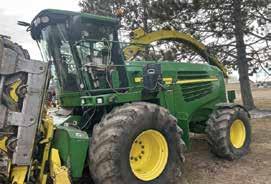





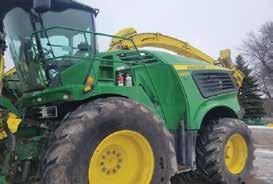




“Quite the weather we’re having,” is a popular phrase in our family this winter season. Then again, what winter season in the Upper Midwest isn’t it a popular phrase? Some weeks it’s blue skies, sunny and fty degrees feeling more like late April than January. Some weeks it’s negative 20 and the heated waterers quit working because it’s so cold that the supply line freezes below the heat tape. I spent hours carrying around tools and pails of hot water getting them thawed so the thirsty cattle could get a drink.
The Christmas season had brought warm temps along with some rain to work in and we celebrated the season in an unusually comfortable outdoor way. We haven’t seen any snow accumulation since that time, and it’s looked a lot more like Kansas here than it should. Ironically, last week, Florida had more snow than us. They may have even gotten
more snow than we’ve seen all winter. At this point, I’ve come to peace with the idea the hay elds may have a lot less alfalfa in them this coming season. The dangerously cold temps came when we had no snow cover whatsoever. I am hoping though the cold temps may not have been a big issue as we’ve found what really seems to be the kiss of death to legumes in the hay elds. The worst winter survival conditions, in our experience, have been fast snowmelt or rain that causes ooding and then freezing days that keep those puddles smothering the legumes. Sometimes even the grasses don’t survive those events and replanting is the best course of action in the spring.
It’s probably time, or maybe I’m already late to get some alfalfa and clover seed reserved at the seed house on the offhand chance we do have winterkill. I prefer it if I can get decent quality organic
seed options locked in. They usually sell out pretty early. We were late this year on making our chicken purchase and slaughter schedule for the upcoming summer pasture season. Every summer, we raise somewhere between 1,000-1,500 Cornish cross and freedom ranger broilers out in one of our cow pastures. The butcher shop already had one of the dates we prefer to schedule chickens lled up. Also, the hatchery we buy freedom ranger birds from only had straight run unsexed chickens for sale as they sold out of cockerels on every date from March to September. We got the scheduling gured out, chicks ordered, and butcher dates blocked.

By
Hopefully the avian inuenza that’s been a popular topic in the media and on farms stays away from both our chickens and cows this summer.
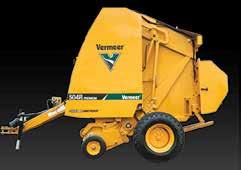










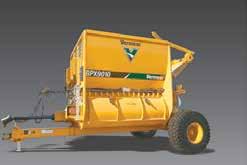



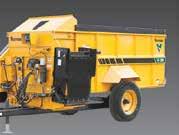

Lately our farm equipment has been behaving as if it is passing around a communicable disease. Our manure scraping skid loader shelled its hydraulic pump, then our feeding skid loader had an actuator fail. After I got the actuator xed, the Kubota UTV started having its front tires try to point different directions thanks to an inner tie rod end separating. I got the Kubota xed and the feeding and now also manure skid loader has a catastrophic belt tensioner failure. We got that xed and then the Kubota lost the ability to steer right because a retaining clip broke inside the steering cylinder. Lastly, a hydraulic hose blew on the skid loader and dropped the bucket into the total mixed ration mixer. God only knows how, as once the wedges are engaged, they’re not supposed to go anywhere with or without hydraulic pressure. Maybe we ought to start parking all those pieces of equipment in different sheds. Hanging out together in the heated shop has been bad for their mechanical health. Our neighbor, Dan, has really saved our butts, allowing us to borrow his skid loader twice in the last month when ours seems to break down every other weekend. Until next time, keep living the dream and monitor your equipment for signs of the mechanical u. Quarantine them quickly if they start to sputter or cough like I had to do to myself on our family ski trip. But that’s a story for another column. Tim Zweber farms with his wife, Emily, their three children and his parents, Jon and Lisa, near Elko, Minnesota.
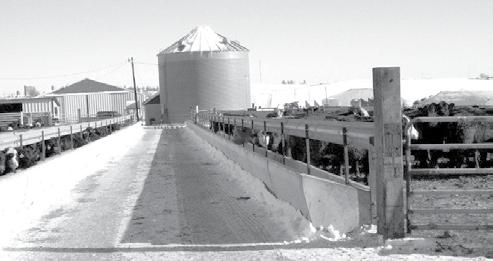


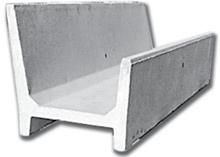

One thing that is for certain is that nothing is certain. Robert Kennedy Jr. and the Make America Healthy Again movement are another potential black swan facing our healthcare, our food industry and potentially our dairy industry. For those unfamiliar with MAHA, it is a bipartisan coalition aimed at cleaning up our food and reversing the quantity of chronic disease in America. What effects this
The NexGen:






By Megan Schrupp & Ellen Stenger Columnists
movement will have on the dairy industry are yet to be known. However, in all this uncertainty, one thing we are certain of: the health benets that dairy provides. Dairy products have long been involved in the foundation of our health. That being said, another product produced from cattle touting health benets is once again rising from the past: tallow.
Tallow is the rendered fat from cattle. Once a staple in households across the nation, tallow fell out of favor in the second half of the 20th century as the low-fat “diet-heart hypothesis” gained momentum. However, new research and investigation into previous studies on the “diet-heart hypothesis” is clearing tallow’s name, bringing it back into our kitchens and restaurants on our plates once again.
Tallow is primarily a saturated fat, meaning that all the carbon bonds in the molecule are saturated with hydrogen atoms. Saturated fats are solid at room temperature. They are also more stable and less likely to go rancid. Other common sources of saturated fats are butter, coconut oil and palm oil. Unsaturated fats are liquid at room temperature. Olive oil (a primarily monounsaturated fat) and canola or soybean oil (polyunsaturated fats) are commonly used unsaturated fats.
Tallow is much more than simple cooking oil. It has some unique characteristics. Some of the saturated fat of tallow is a specic type of fat known as stearic acid. According to the Mayo Clinic, the stearic acid content of tallow appears not to raise cholesterol in the same manner as other saturated fats. Tallow is also rich in fat soluble vitamins such as A, D, E and K. Note that the method of rendering can alter the quantities of these vitamins in the nal product. But using tallow in cooking can allow for increased absorption of fatsoluble vitamins from other sources in our gut.
Of all the aspects of tallow, one of the most favorable is the smoke point or peroxidation index. The smoke point is the temperature at which an oil will begin to degrade and produce harmful oxidized compounds. These oxidized compounds have been shown to increase inammation, oxidative stress, and the risk of chronic diseases, such as heart disease. The smoke point of tallow is 420-480 degrees, which means it is excellent for cooking and frying. The smoke point of olive oil, at 350410 degrees, is much lower, which makes it an unsavory choice to use with heat. Beef tallow also adds a depth of umami avor that vegetable oils cannot match. As an example, many older readers might remember McDonald’s French fries and how good they used to taste. Prior to 1990, McDonald’s used to fry its world-famous French fries in beef tallow. They now use vegetable oil and add beef avorings in an attempt to mimic the umami avor the tallow used to provide. However, restaurants are coming to an understanding of the many benets of frying in beef tallow and have committed to returning to the era of delicious fried foods. One such restaurant is Steak n Shake, which has nixed the vegetable oil in favor of tallow in its fryers starting this month.
Another interesting trend is the use of tallow for promoting healthy skin. According to research by Margaret Russel in the National Institutes of Health’s National Library of Medicine, the composition of tallow is similar to that of our natural skin oils. The nutrient-dense salve loaded with oleic acid, palmitic acid, stearic acid, and linoleic acid allows it to penetrate through the skin surface, locking in moisture and reducing oxidation. The chemistry of tallow, along with the essential vitamins it contains, makes it an excellent resource for those with skin issues.
About a year ago, we jumped on the viral skin care trend and haven’t looked back since. The thousands of personal testimonies have been spot on. Tallow has been a fantastic treatment for everything from dry, normal skin, to eczema, and minor skin irritation. We now offer both tallow balms and tallow soap, handmade from our grass-fed dairy beef at our market.
Want to learn more? The book, The Big Fat Surprise by Nina Teicholz is a must-read. Or if you are interested in rendering your own tallow, it’s easy. There are many stepby-step guides online. Visit your local butcher shop or request that your butcher save the suet from your next cow. A friendly butcher may even grind the fat for you, making it ever easier to render at home.
Megan Schrupp and Ellen Stenger are sisters and co-owners of both NexGen Dairy and NexGen Market in Eden Valley, Minnesota. They can be reached at Nexgendairy@gmail.com.
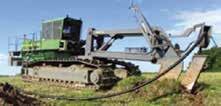











Meet your new winter authority: Kommand™ Guardian
Trust the blue to protect your herd Kommand Guardian is a new non-iodine winter teat dip that packs a one-two punch pairing mastitis-killing power with effective teat conditioning. Exclusive LactiFusion™ technology bonds two effective germicides to help safeguard your milk quality. As the temperature drops, take charge with Kommand Guardian.
teat dip solution teats from harsh weather against mastitiscausing organisms LactiFusion™ technology
Contact Your Local GEA Milking Equipment Dealer:
Central Ag Supply, Inc.
Centre Dairy Equipment and Supply Inc. Sauk Centre, MN
Eastern Iowa Dairy System
Five Star Supply
Fuller’s Milker Center, LLC.
J Gile Dairy Equipment, Inc.
Leedstone, Inc.
Monroe Westfalia Surge
Sioux Dairy Equipment, Inc. Rock Valley, IA
Midwest Livestock Systems
Stanley Schmitz, Inc.
Tri-County Dairy Supply, Inc.